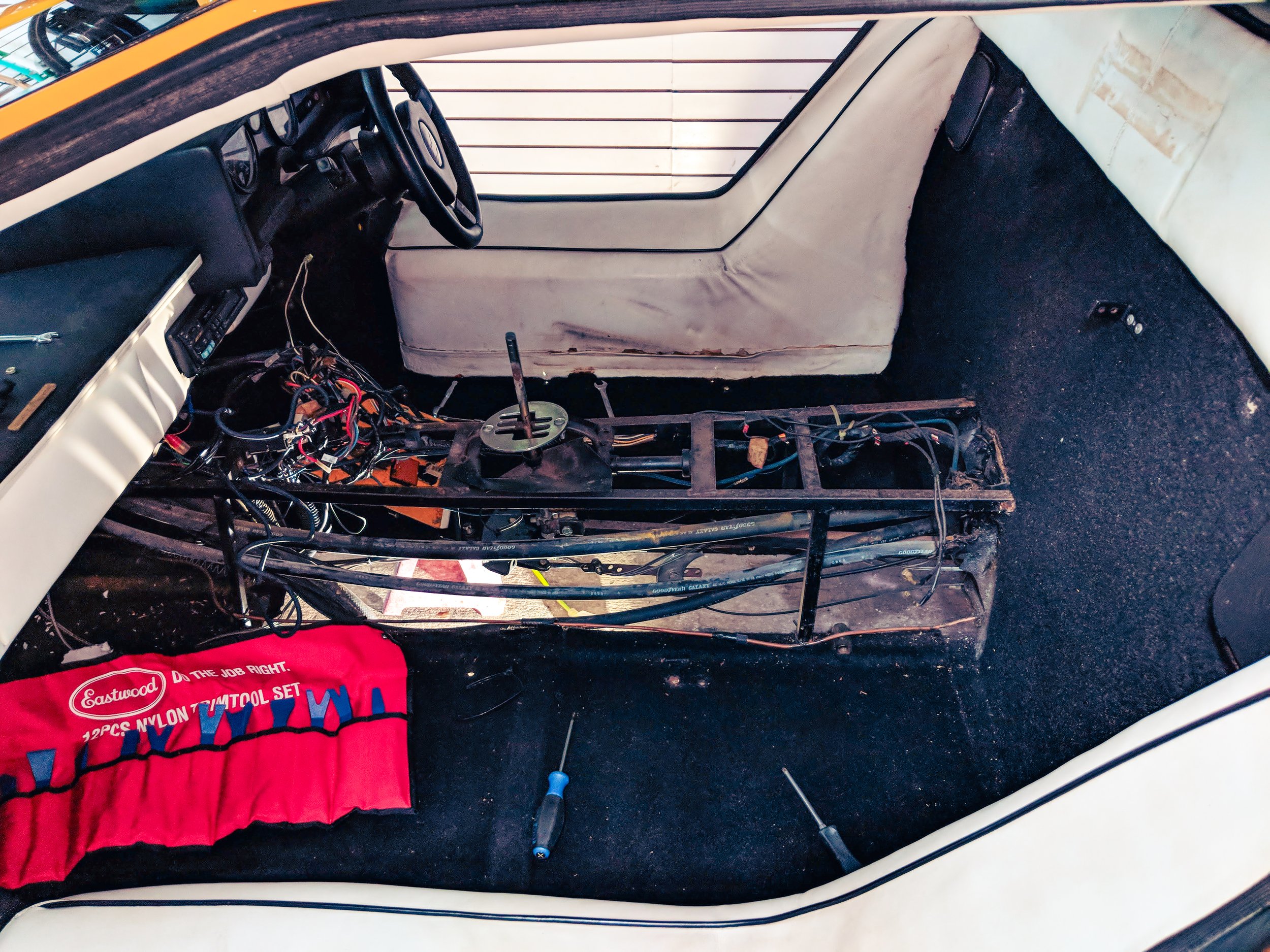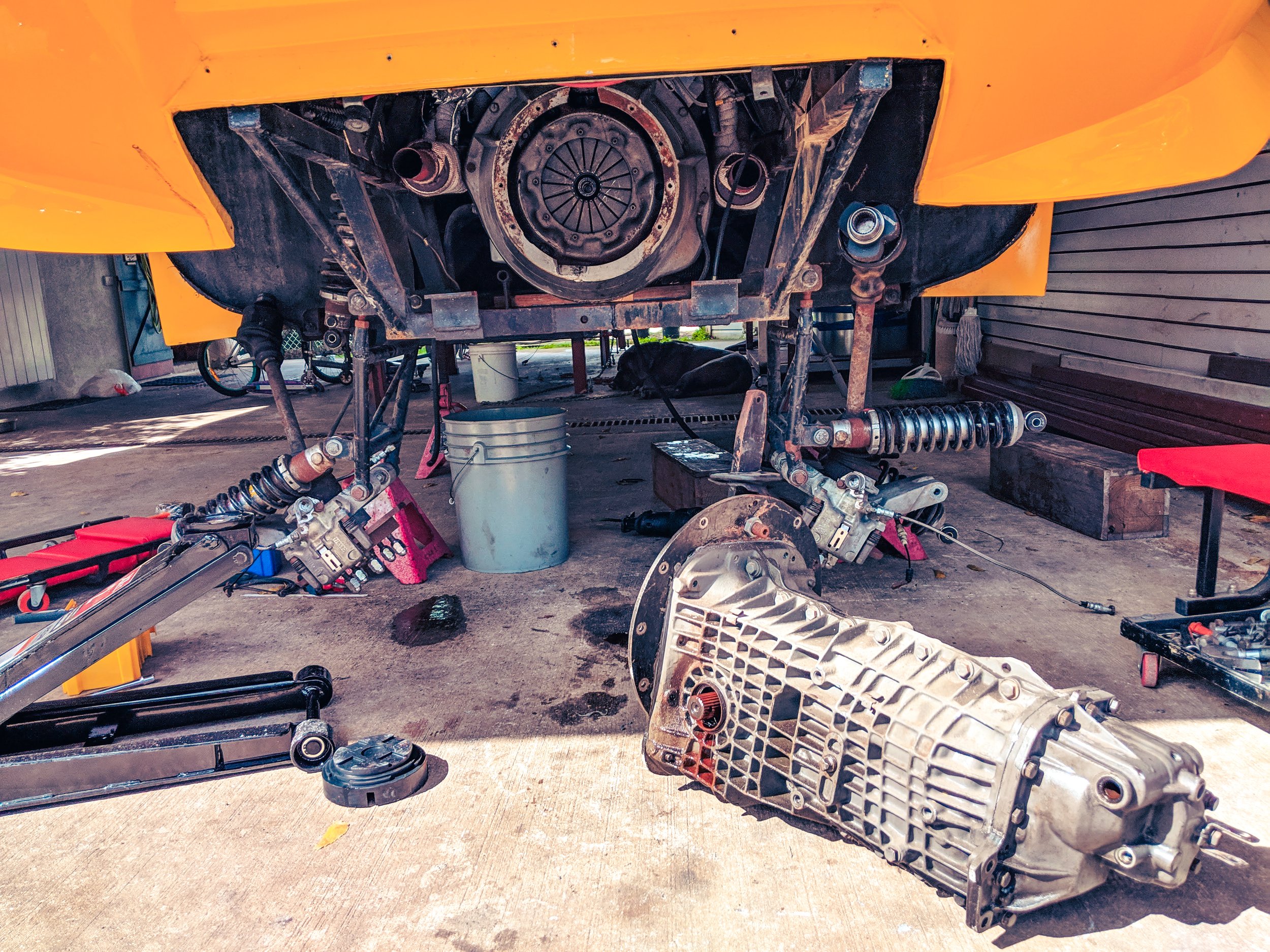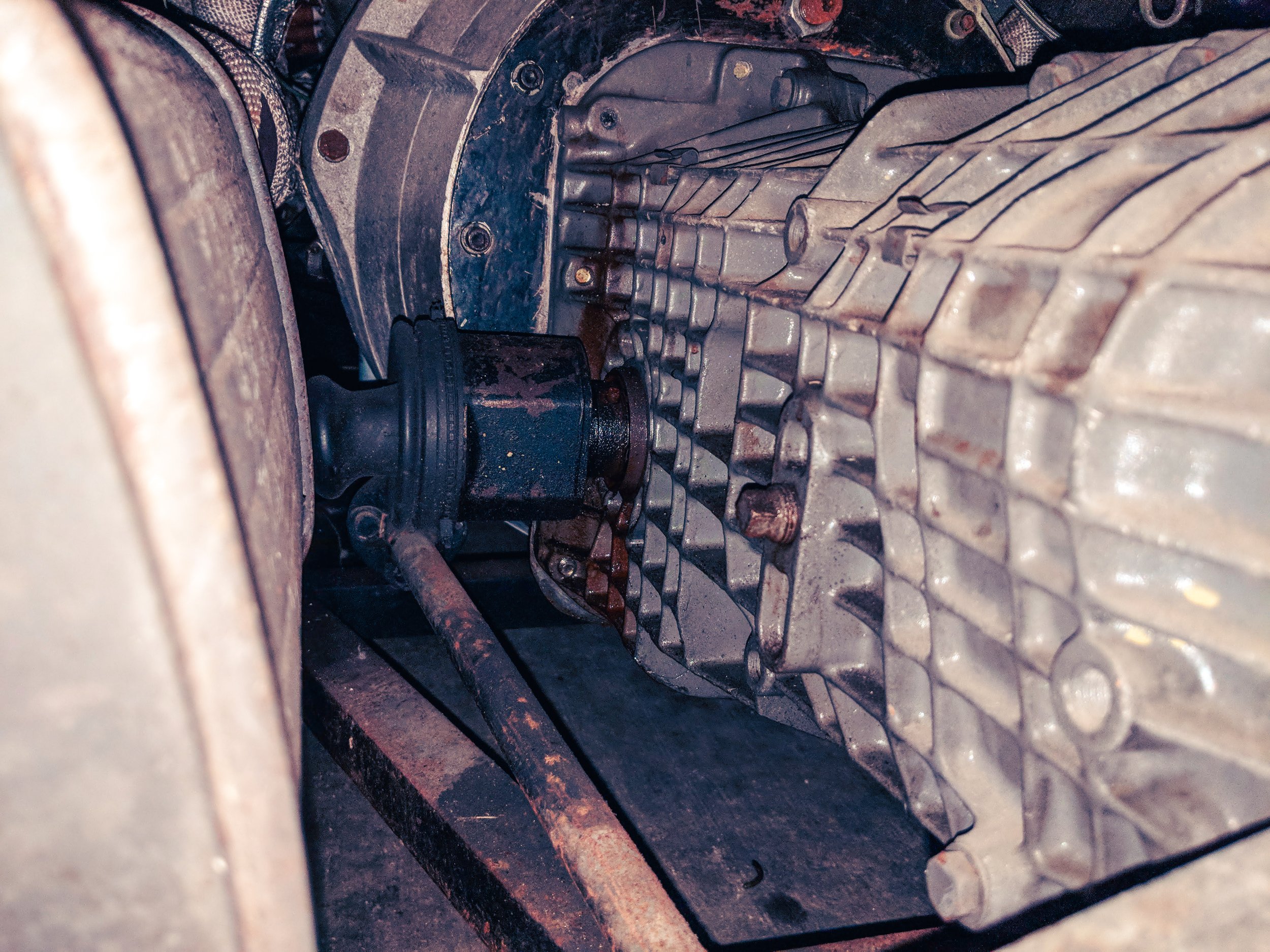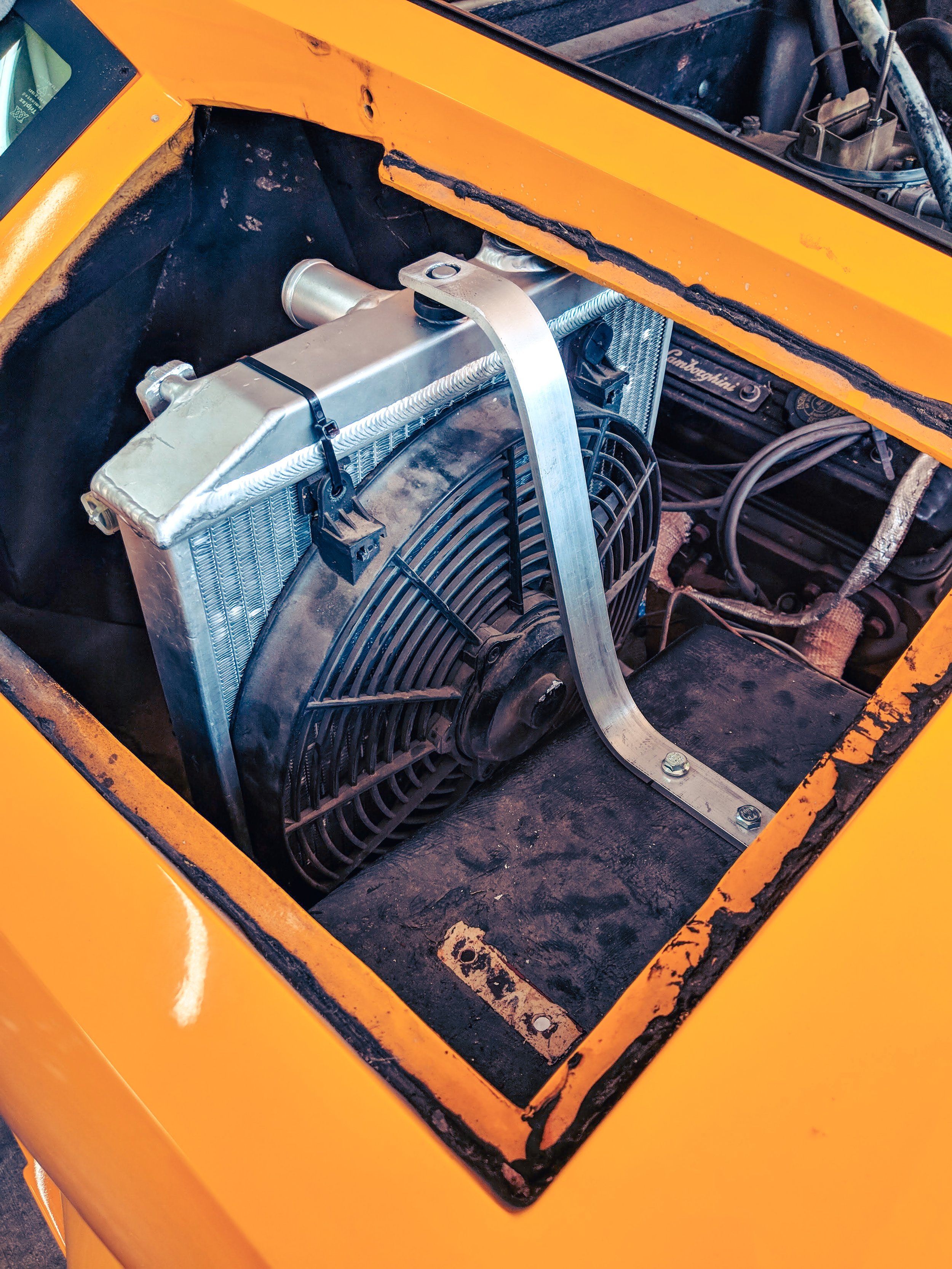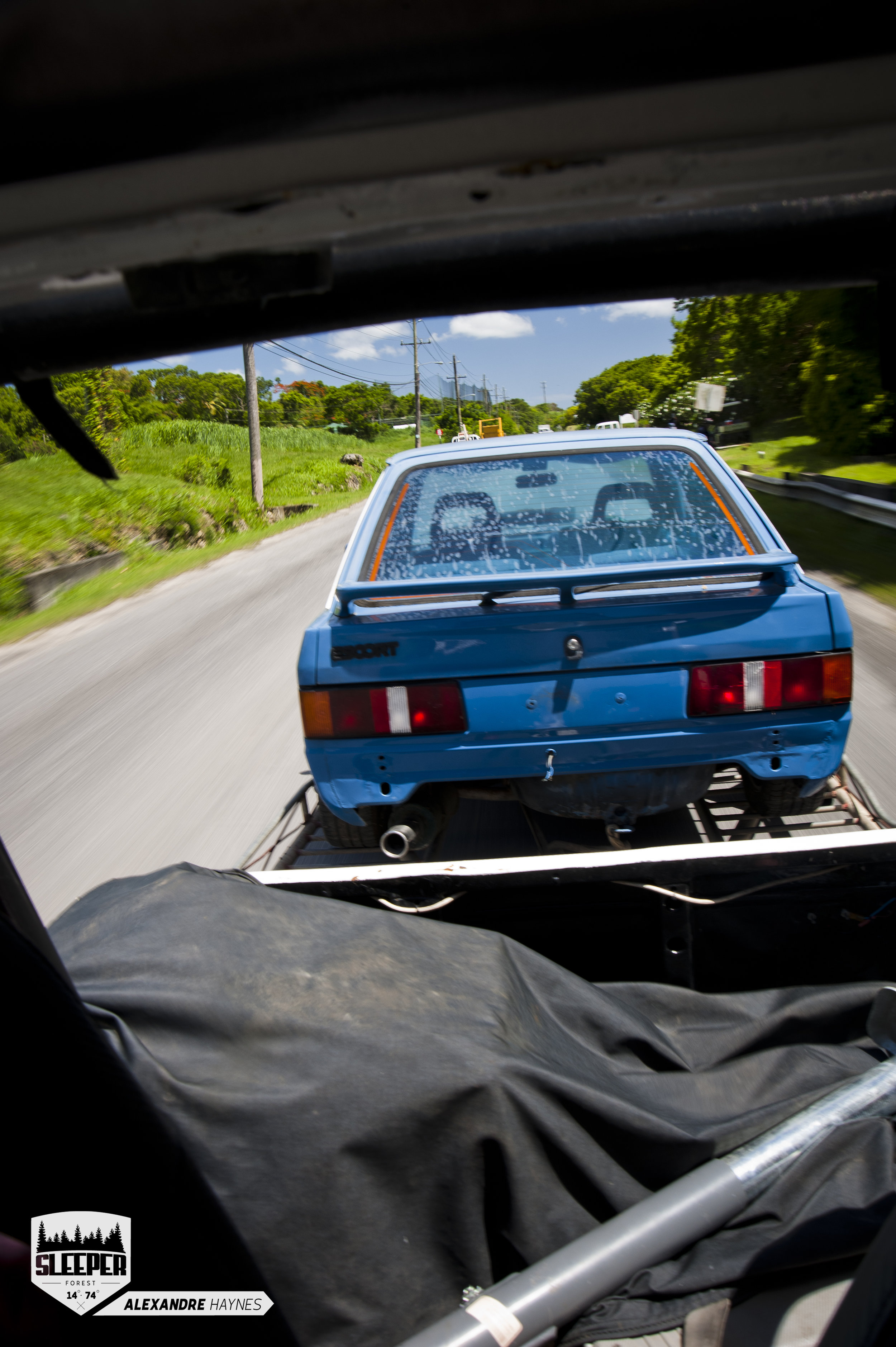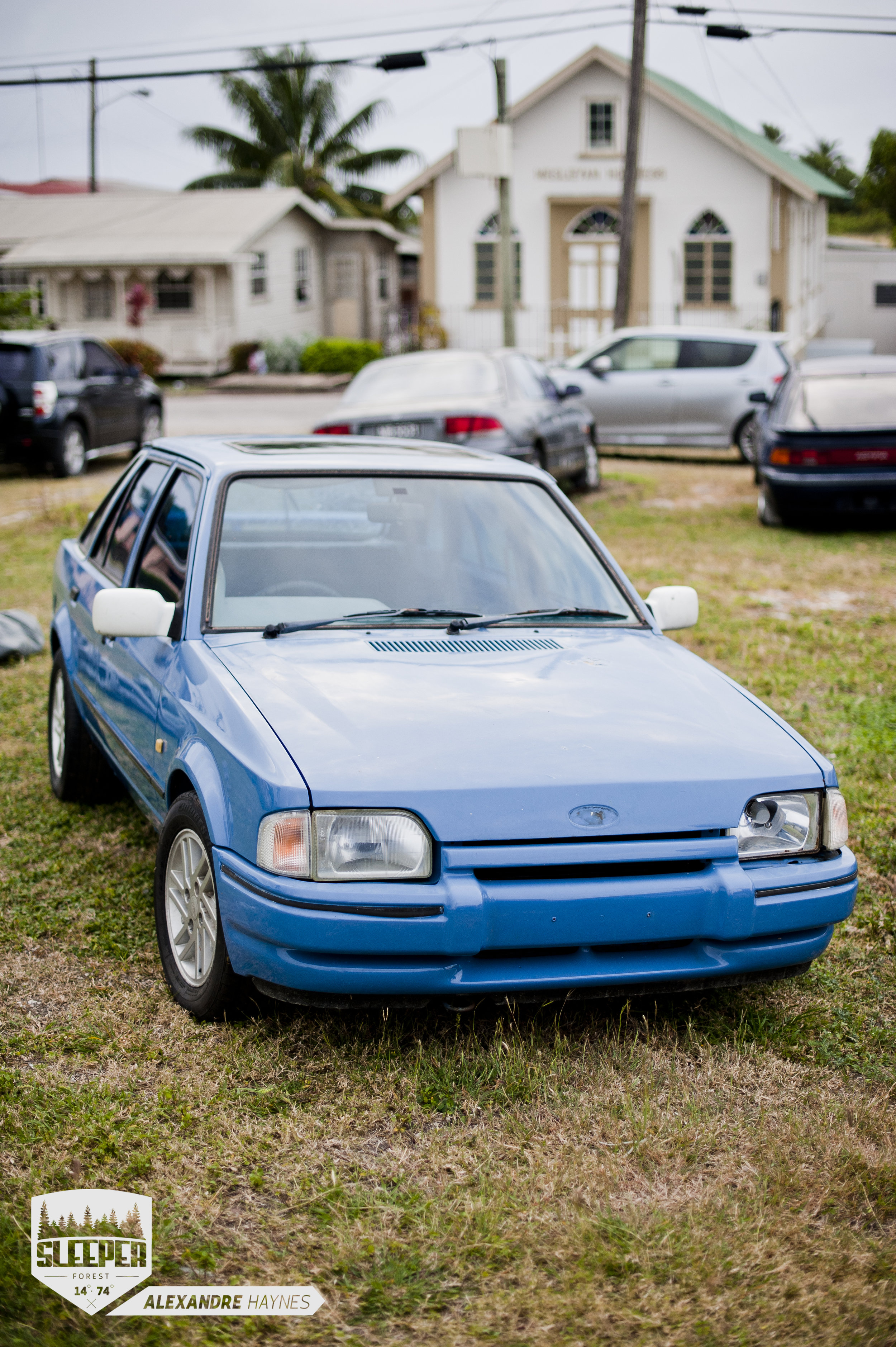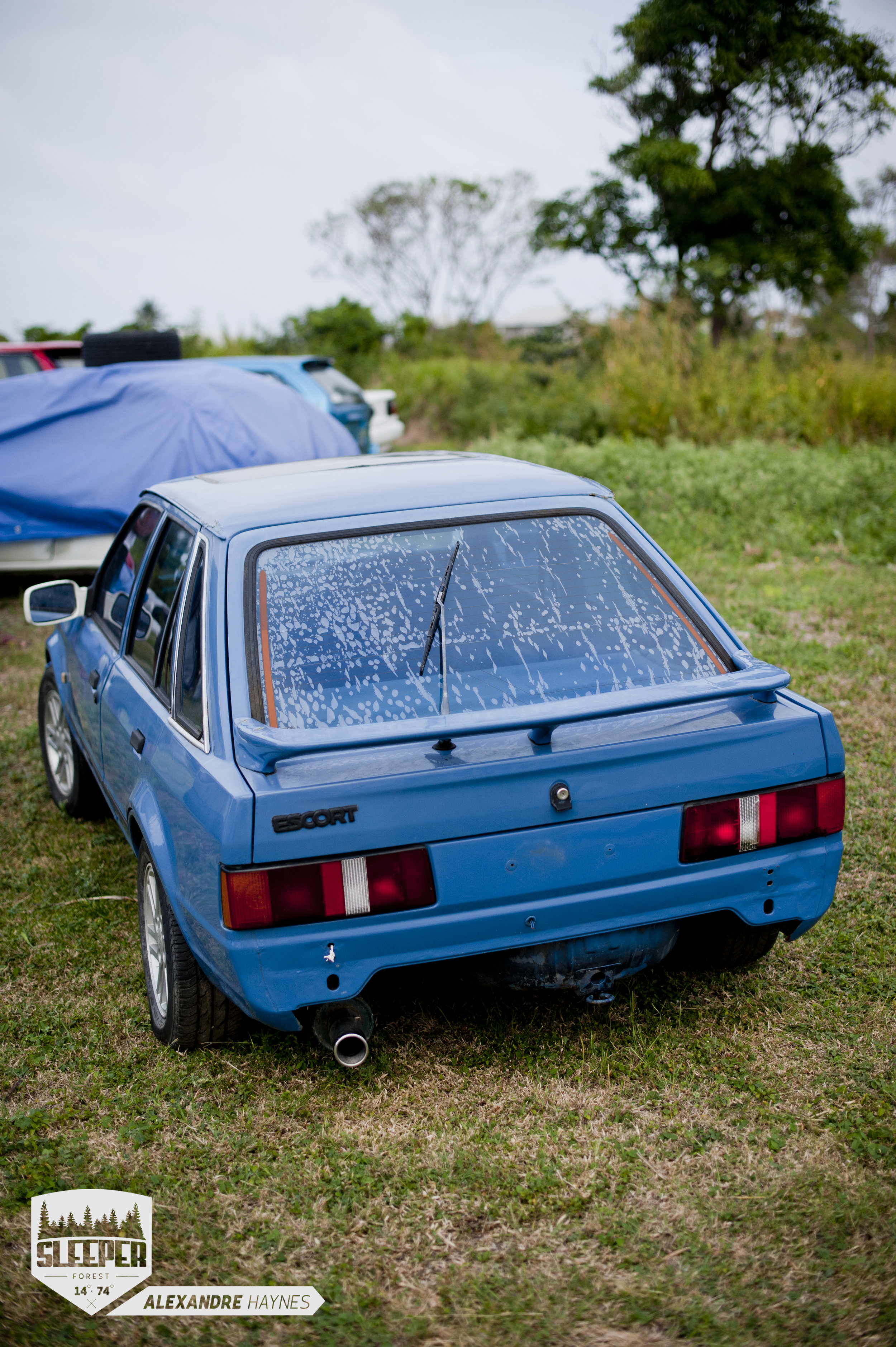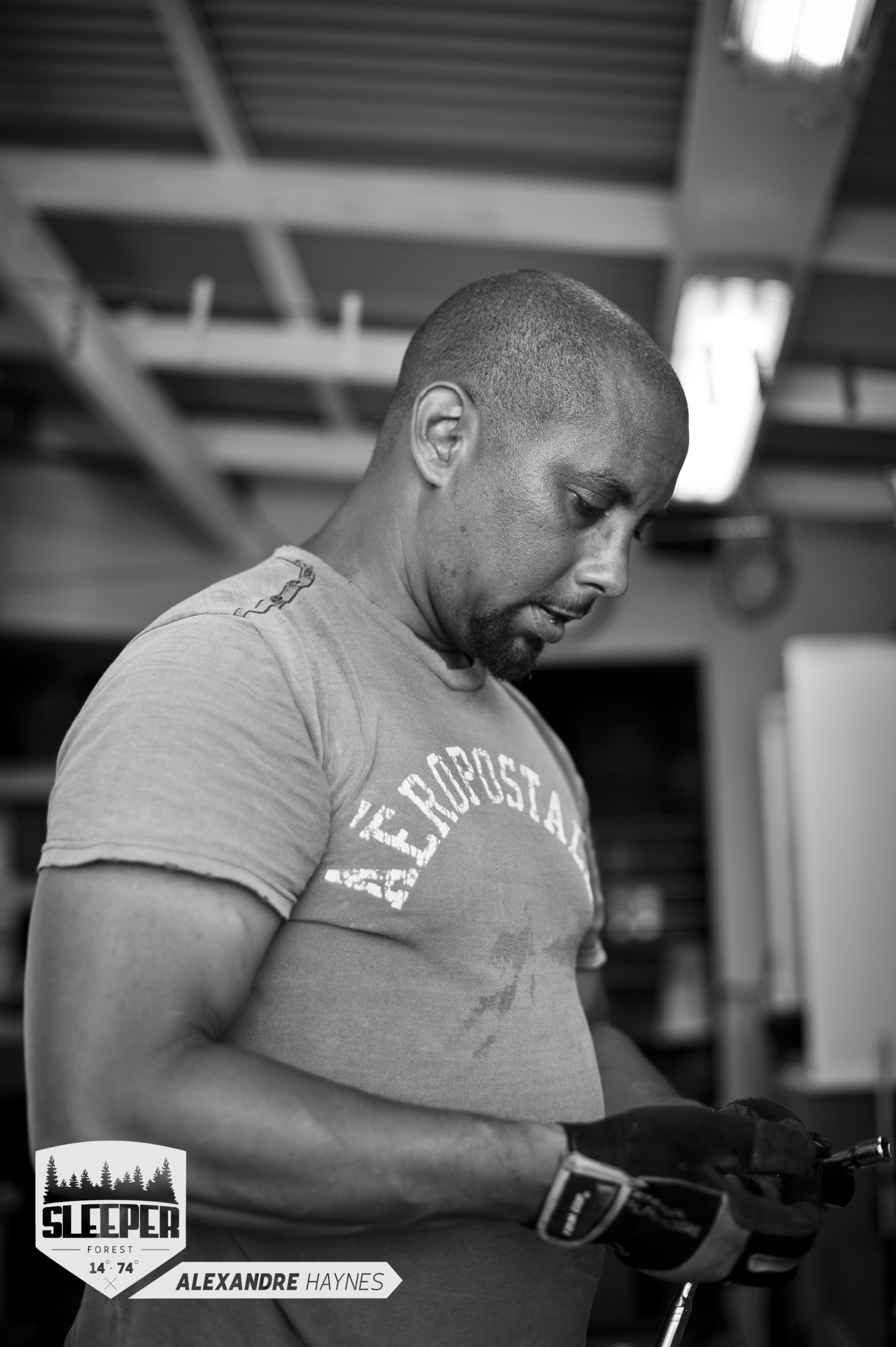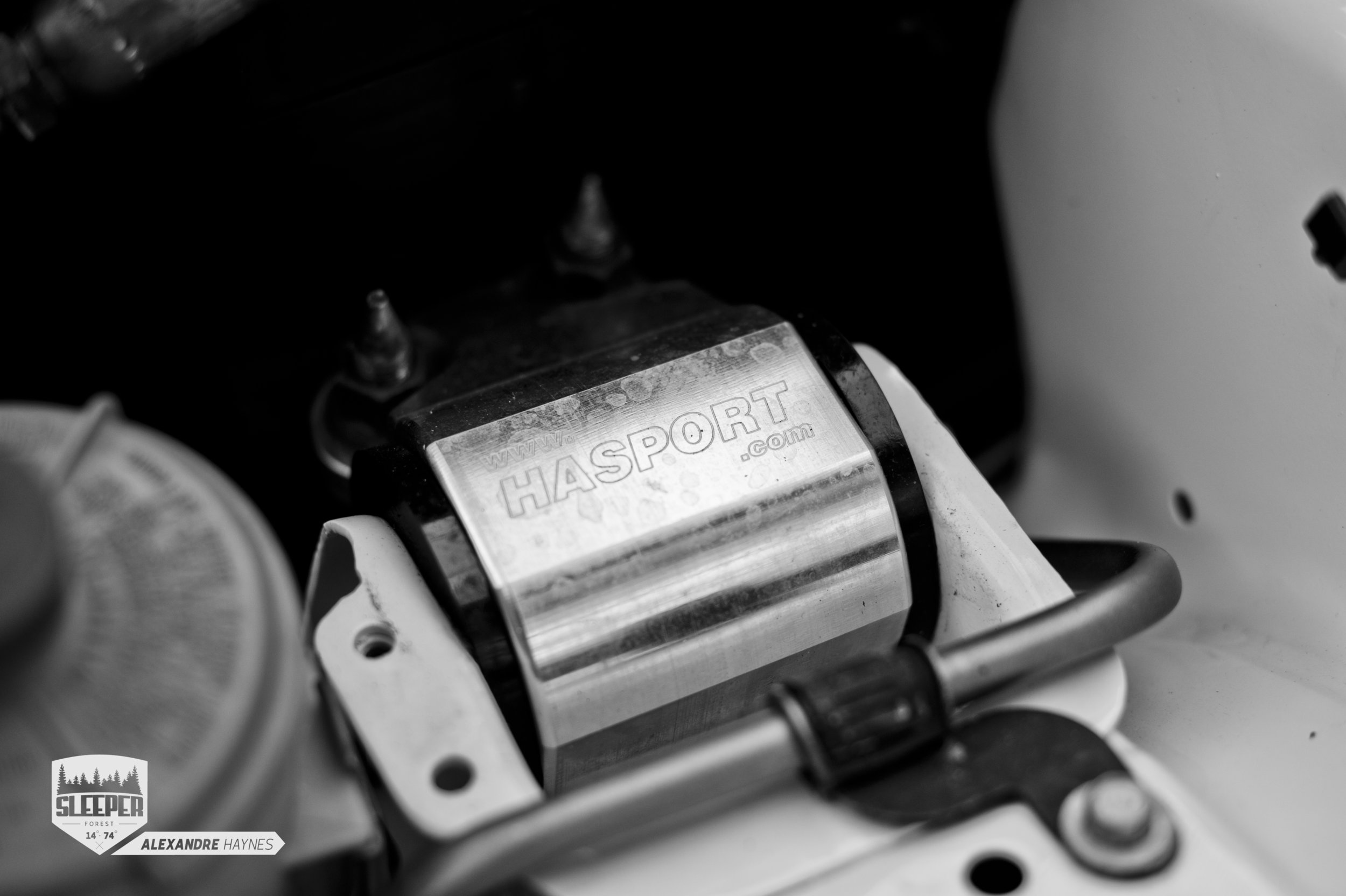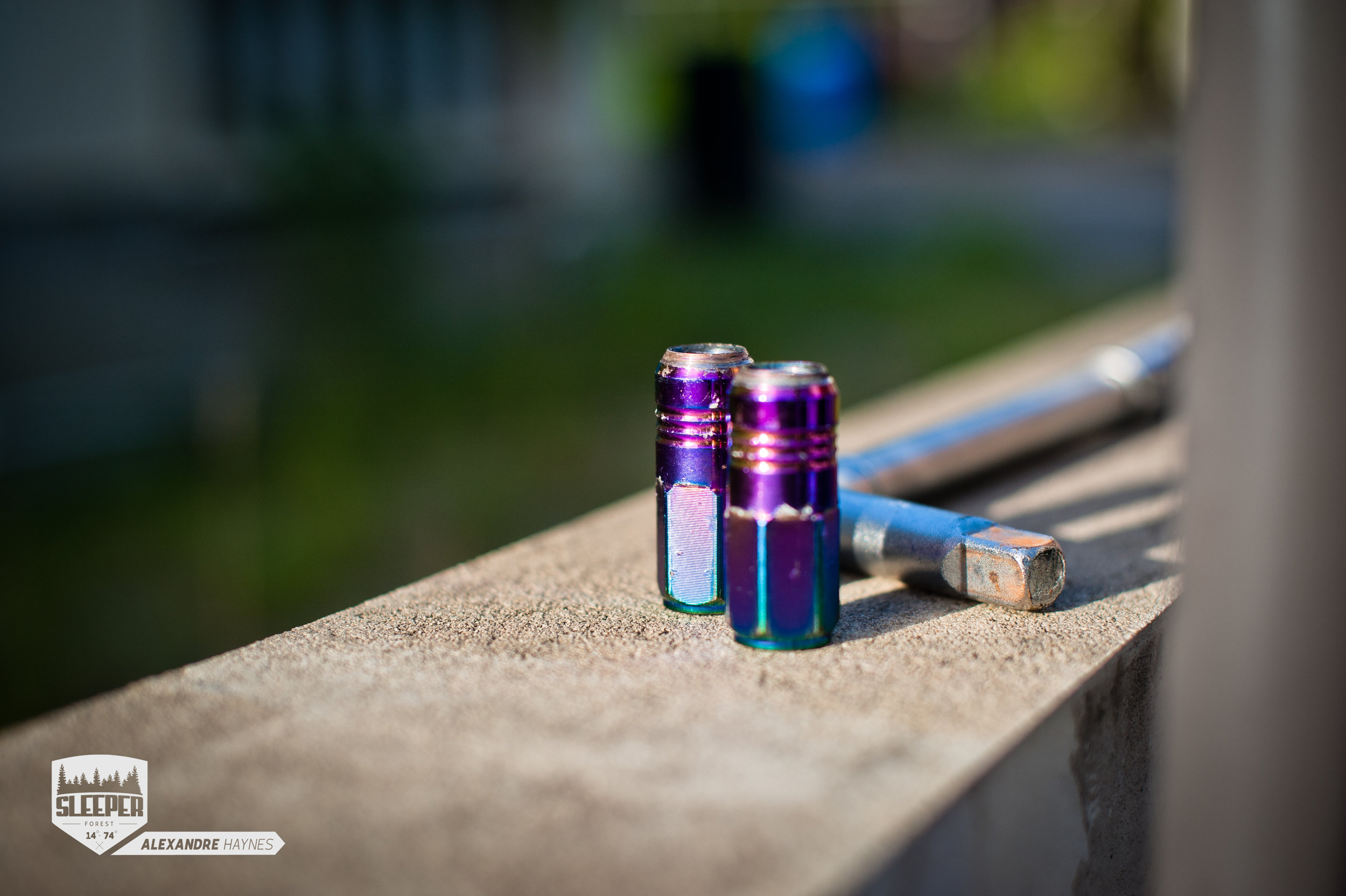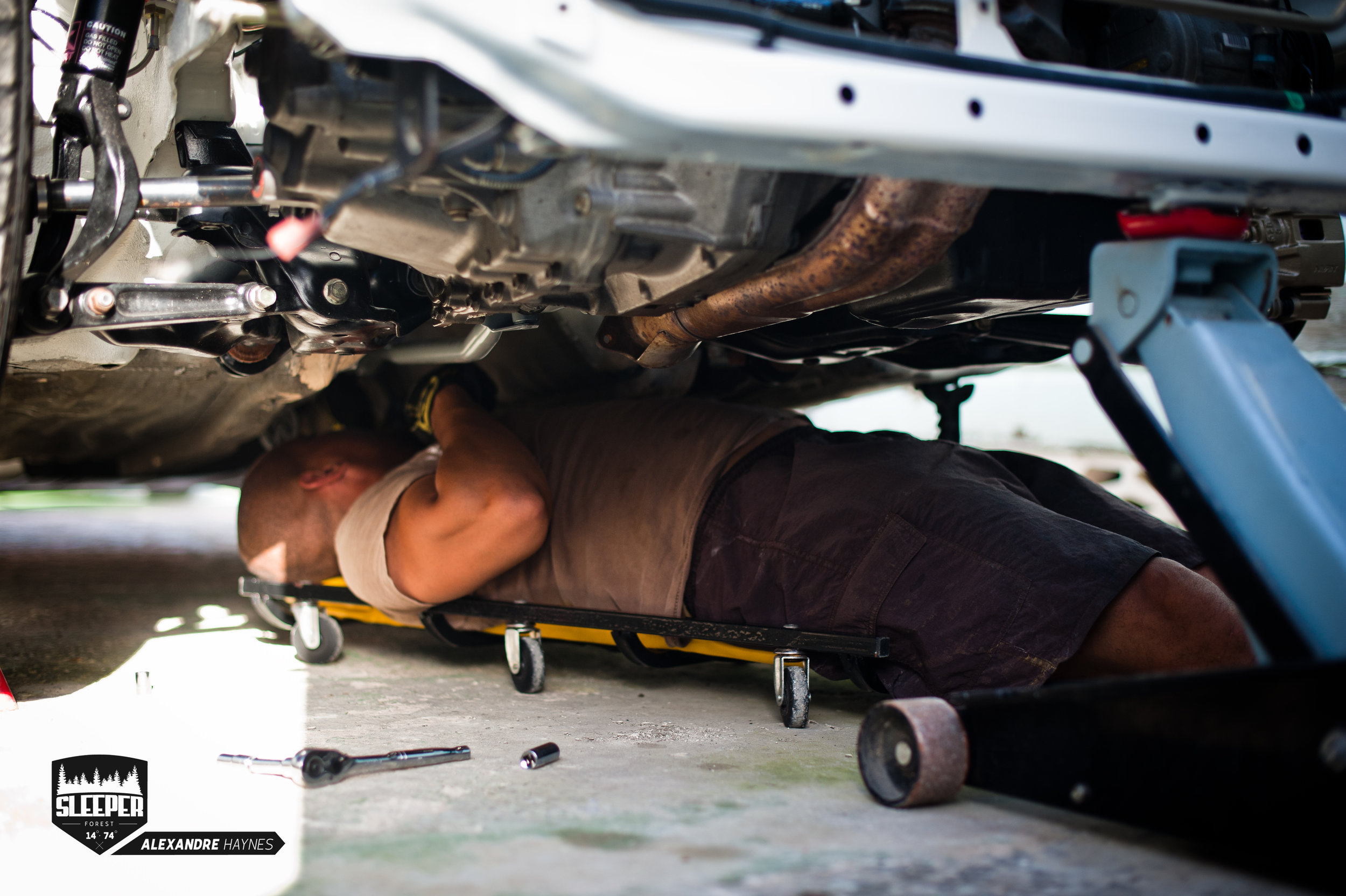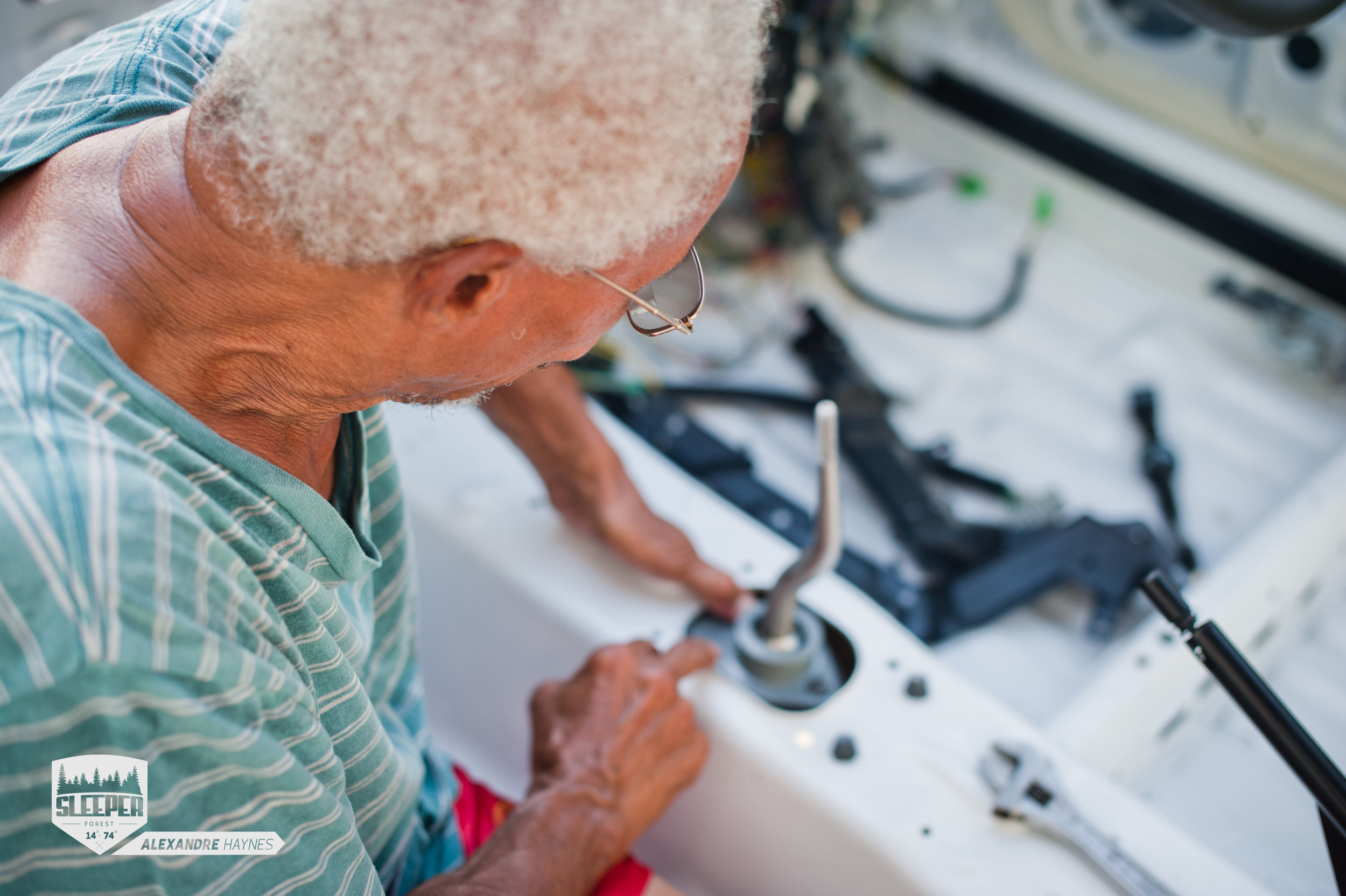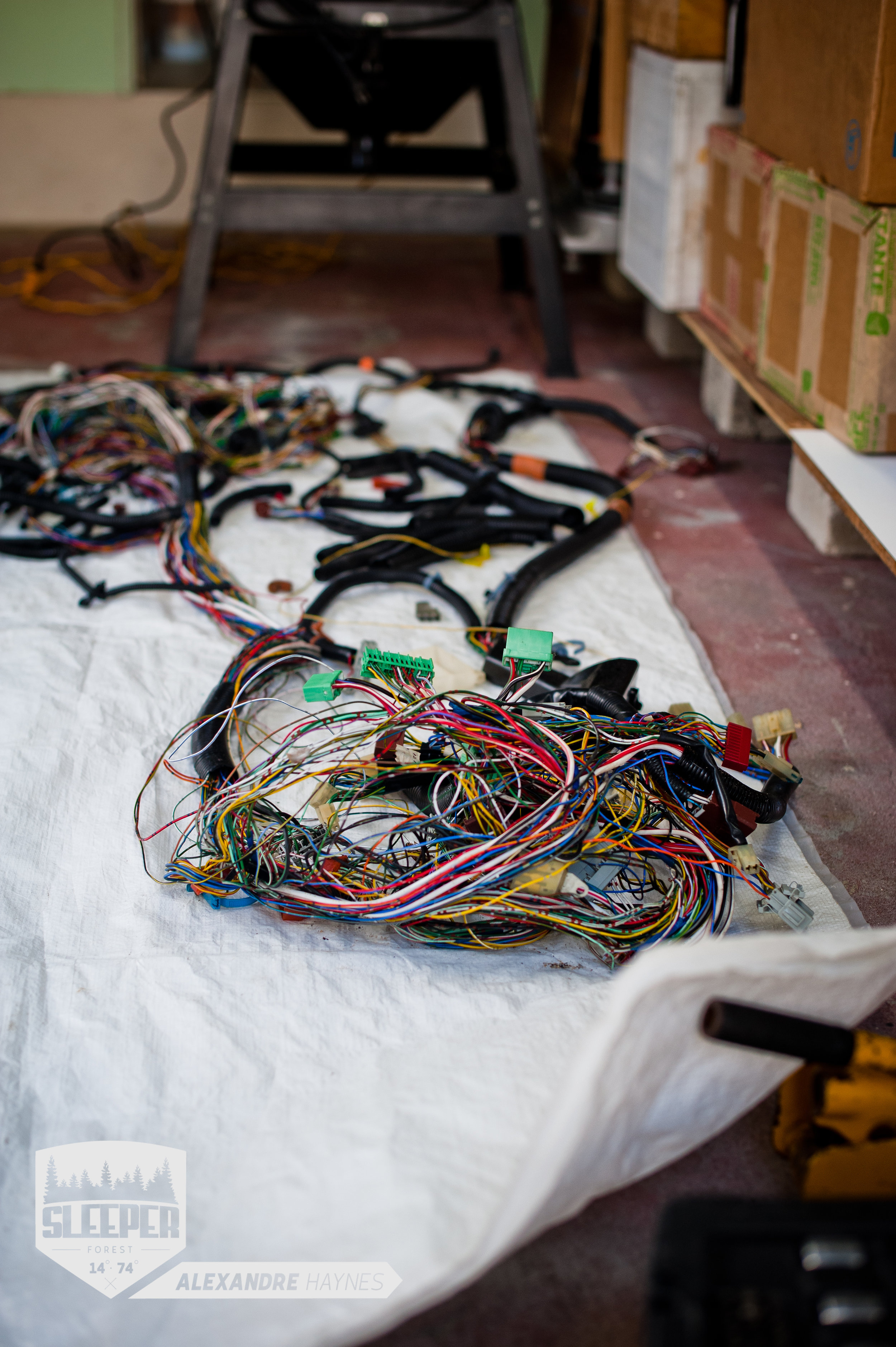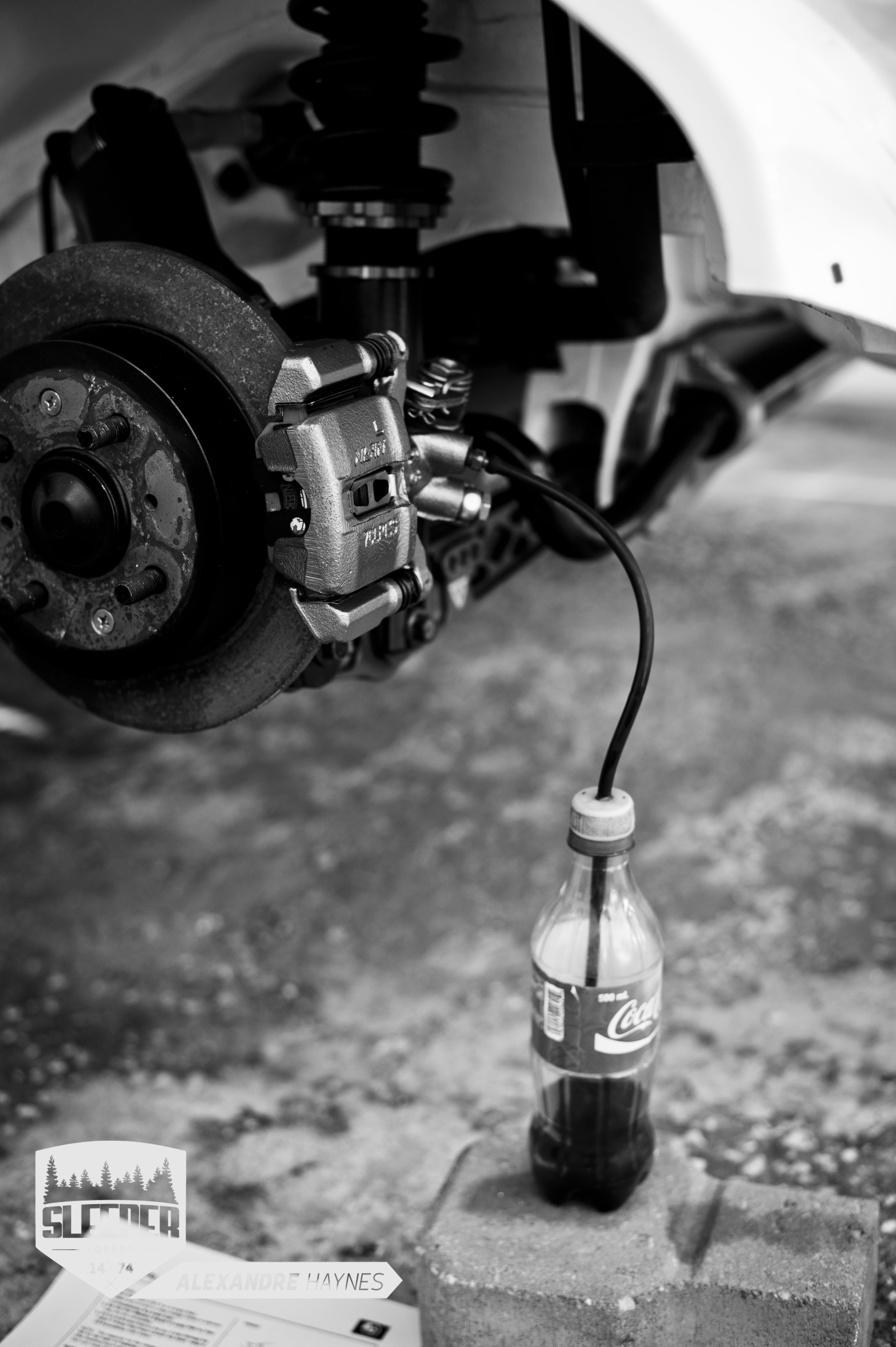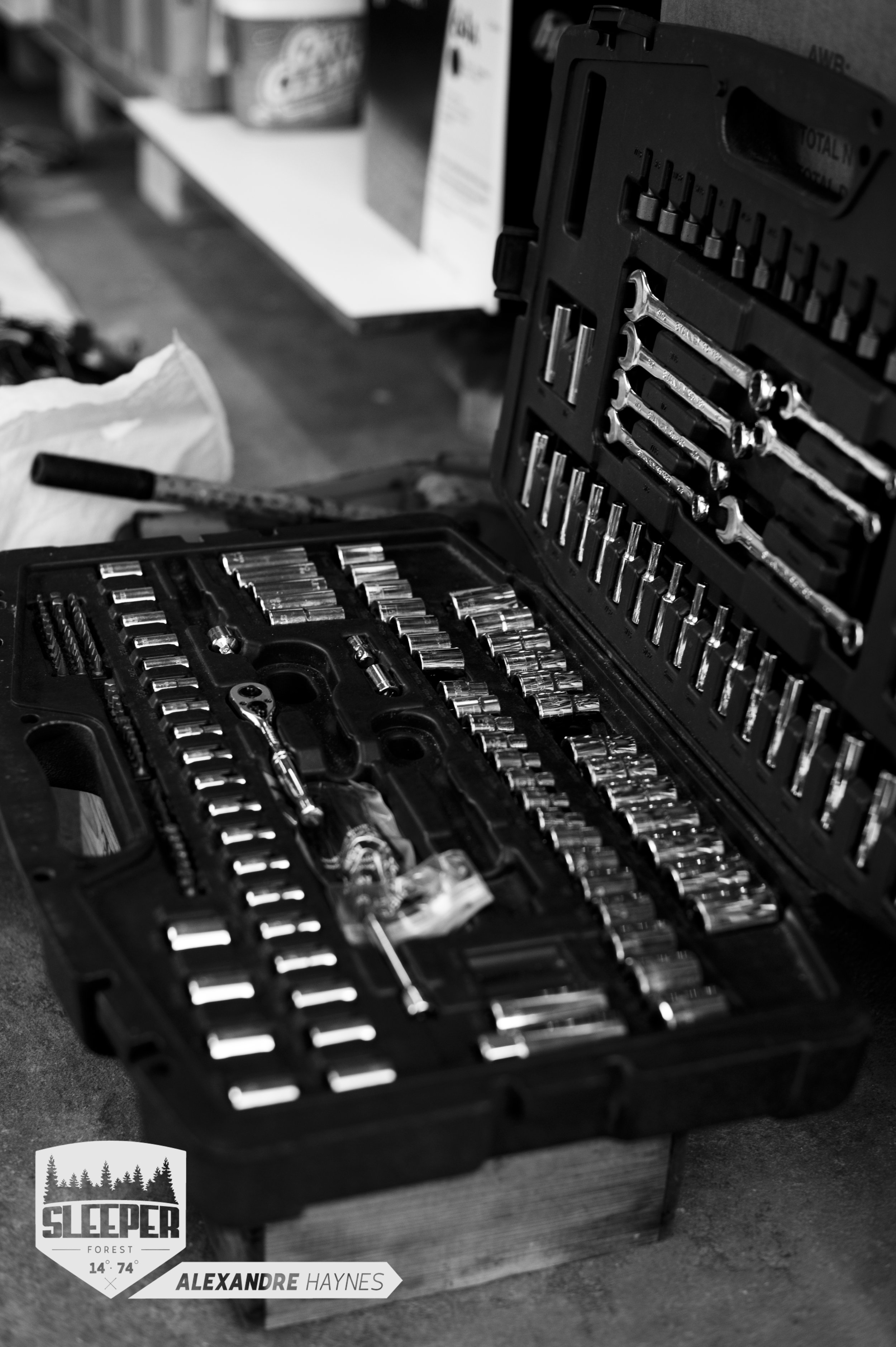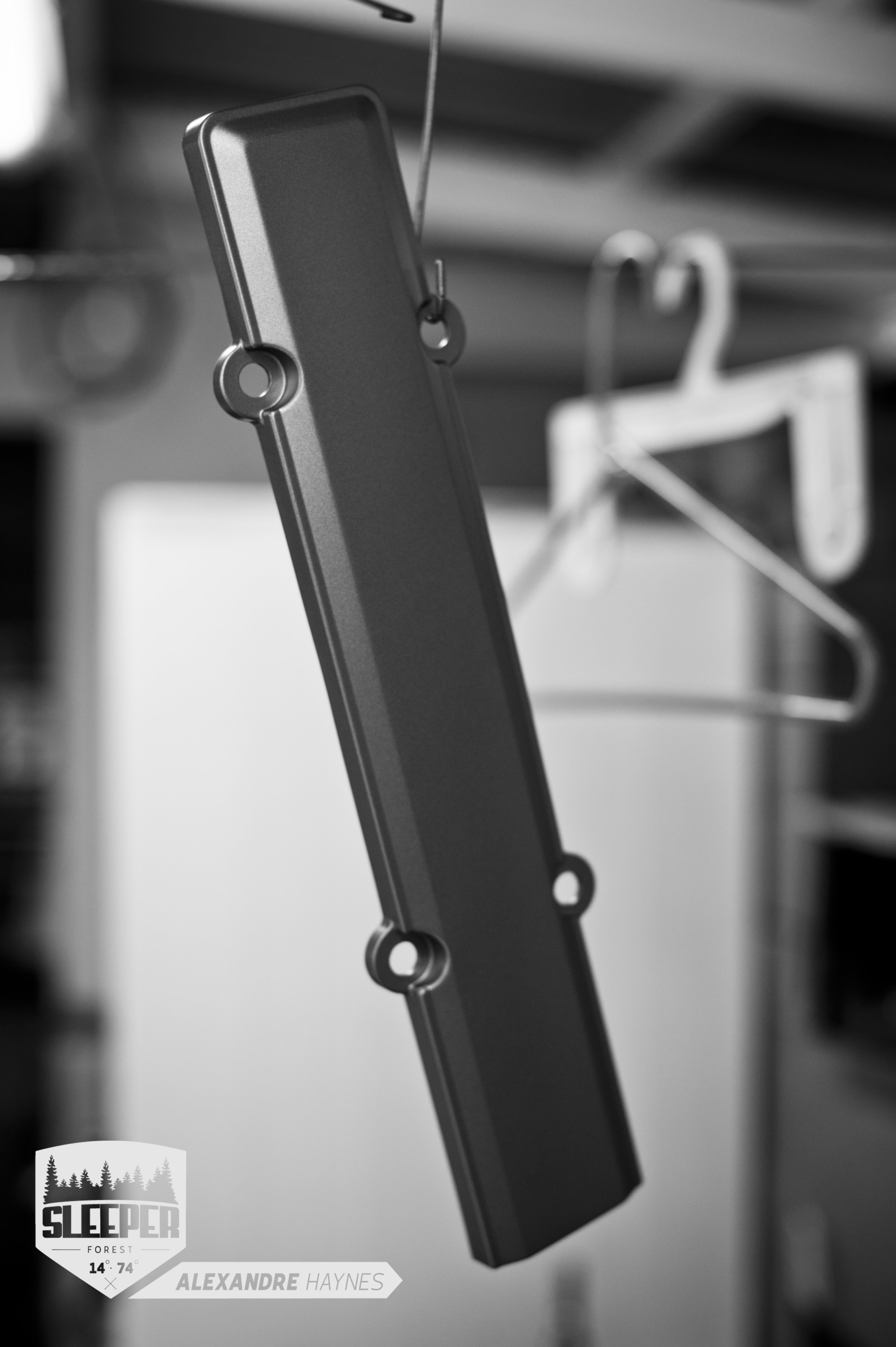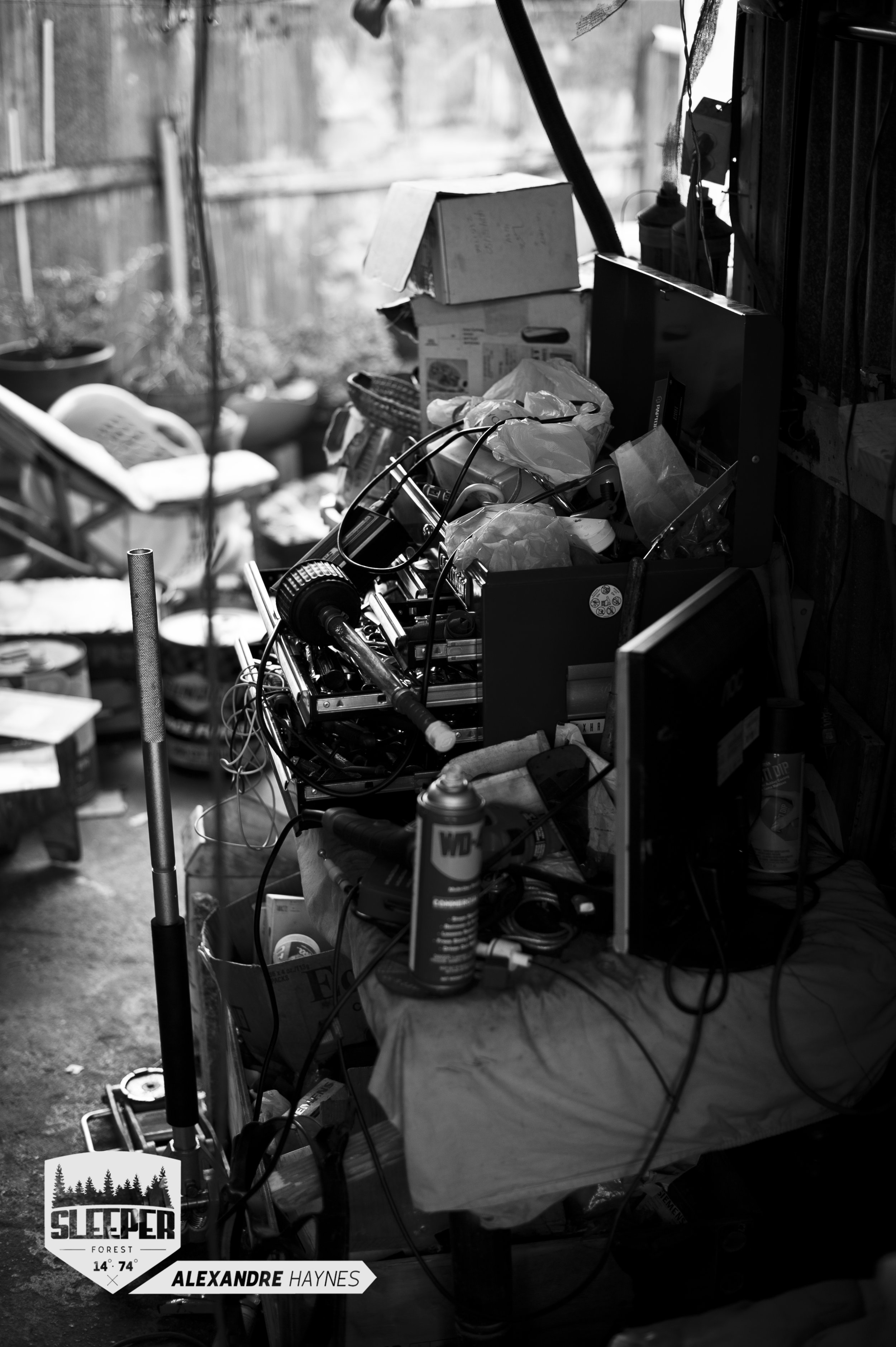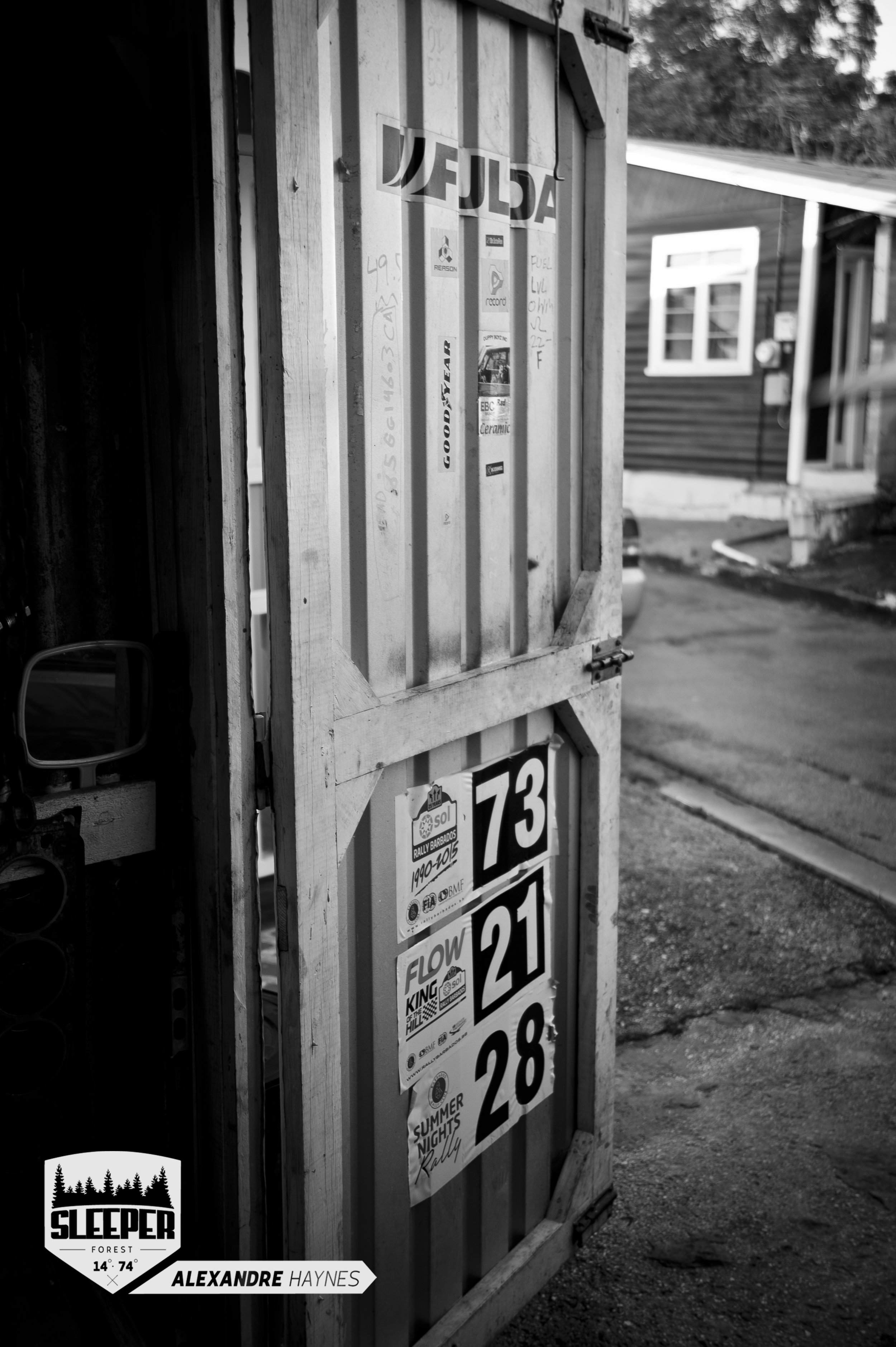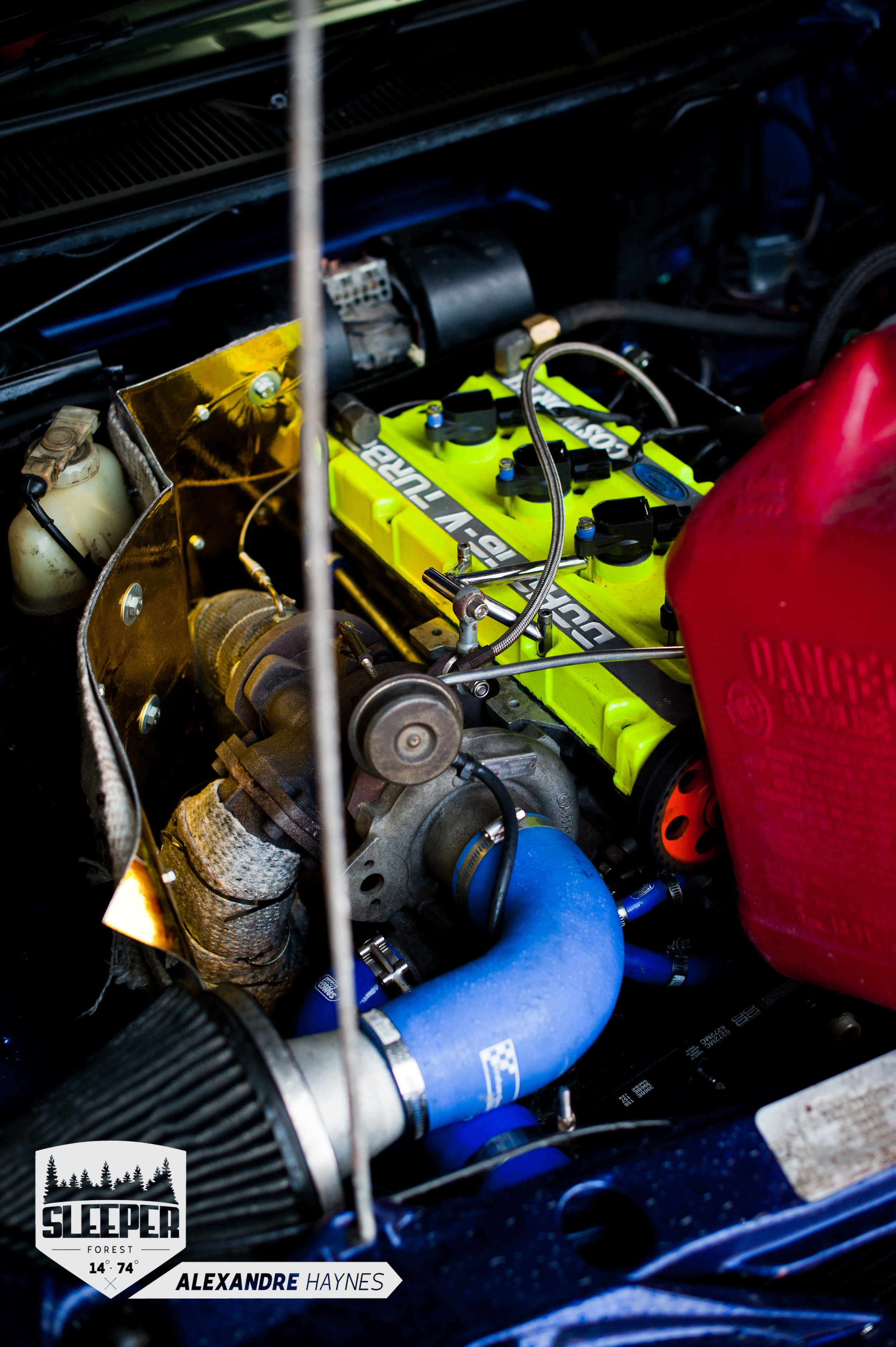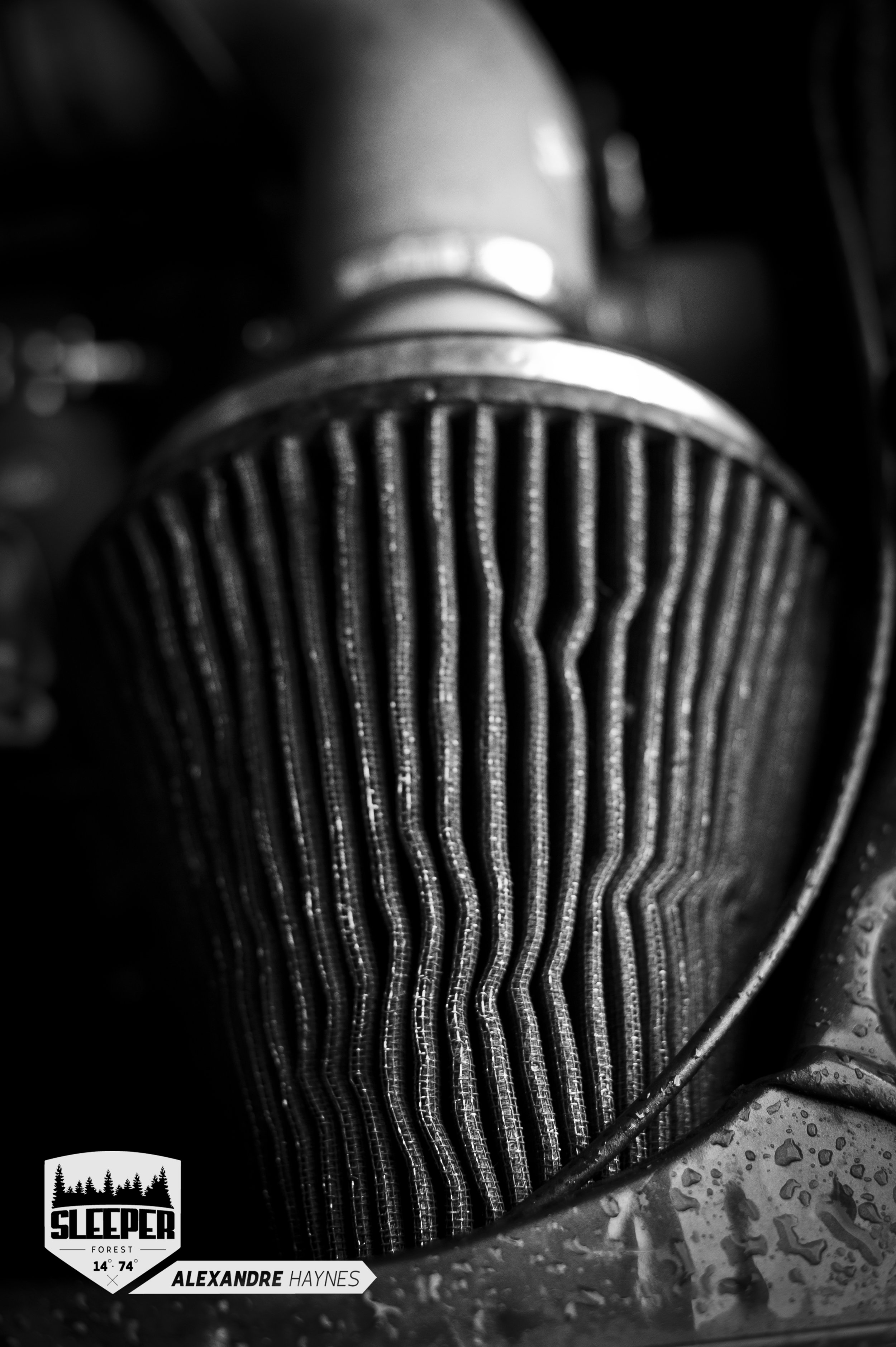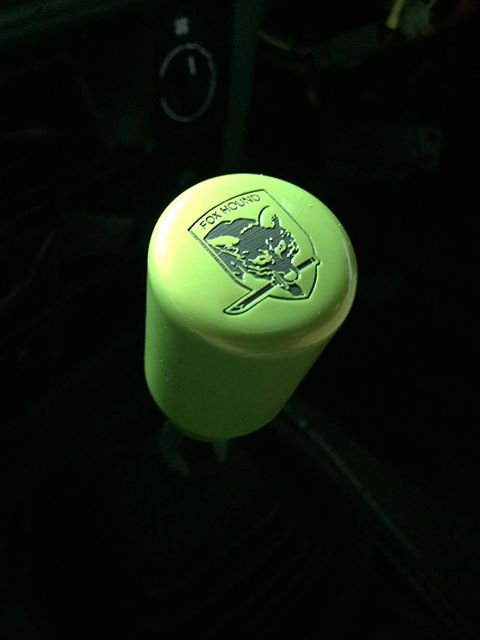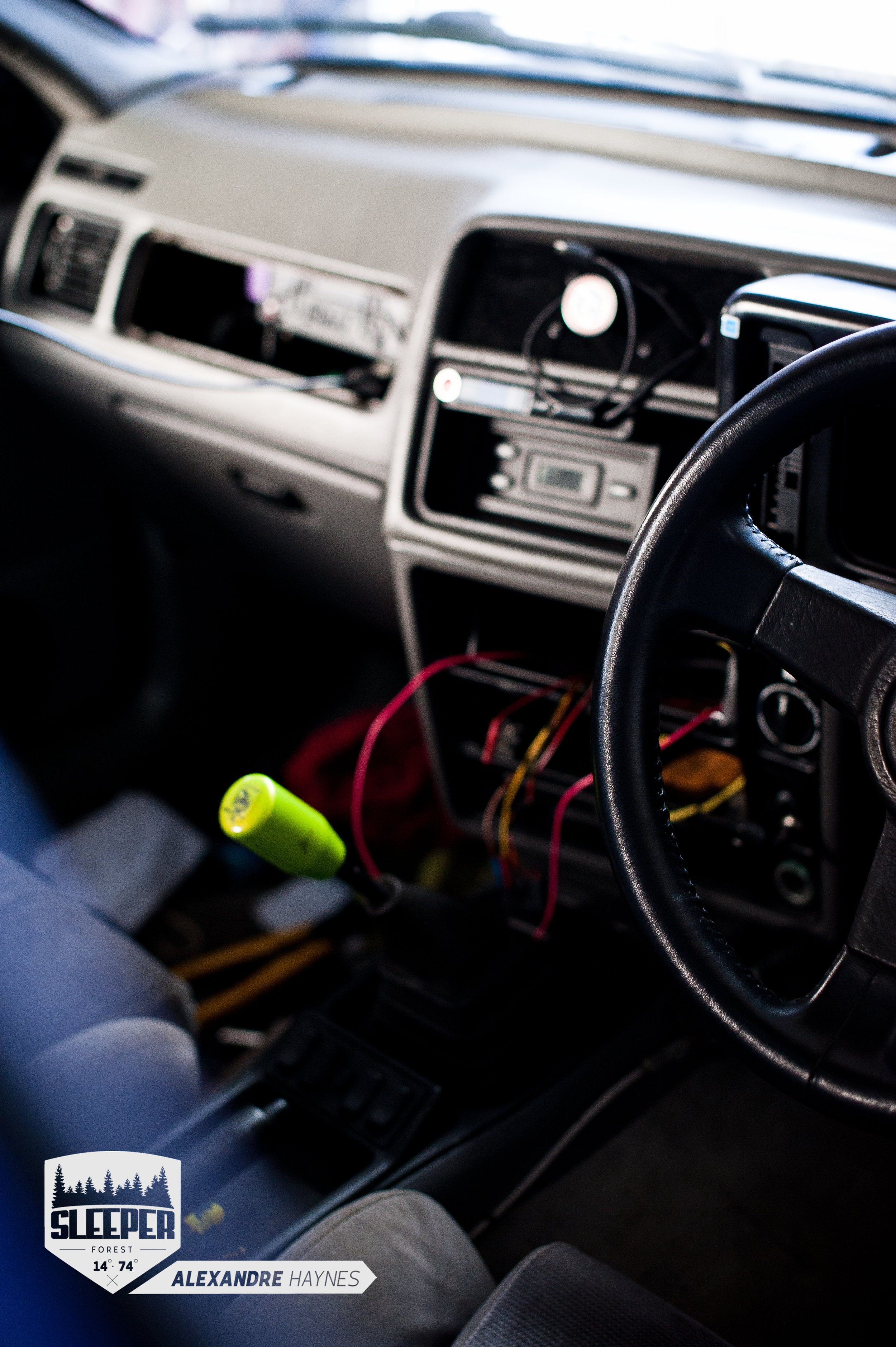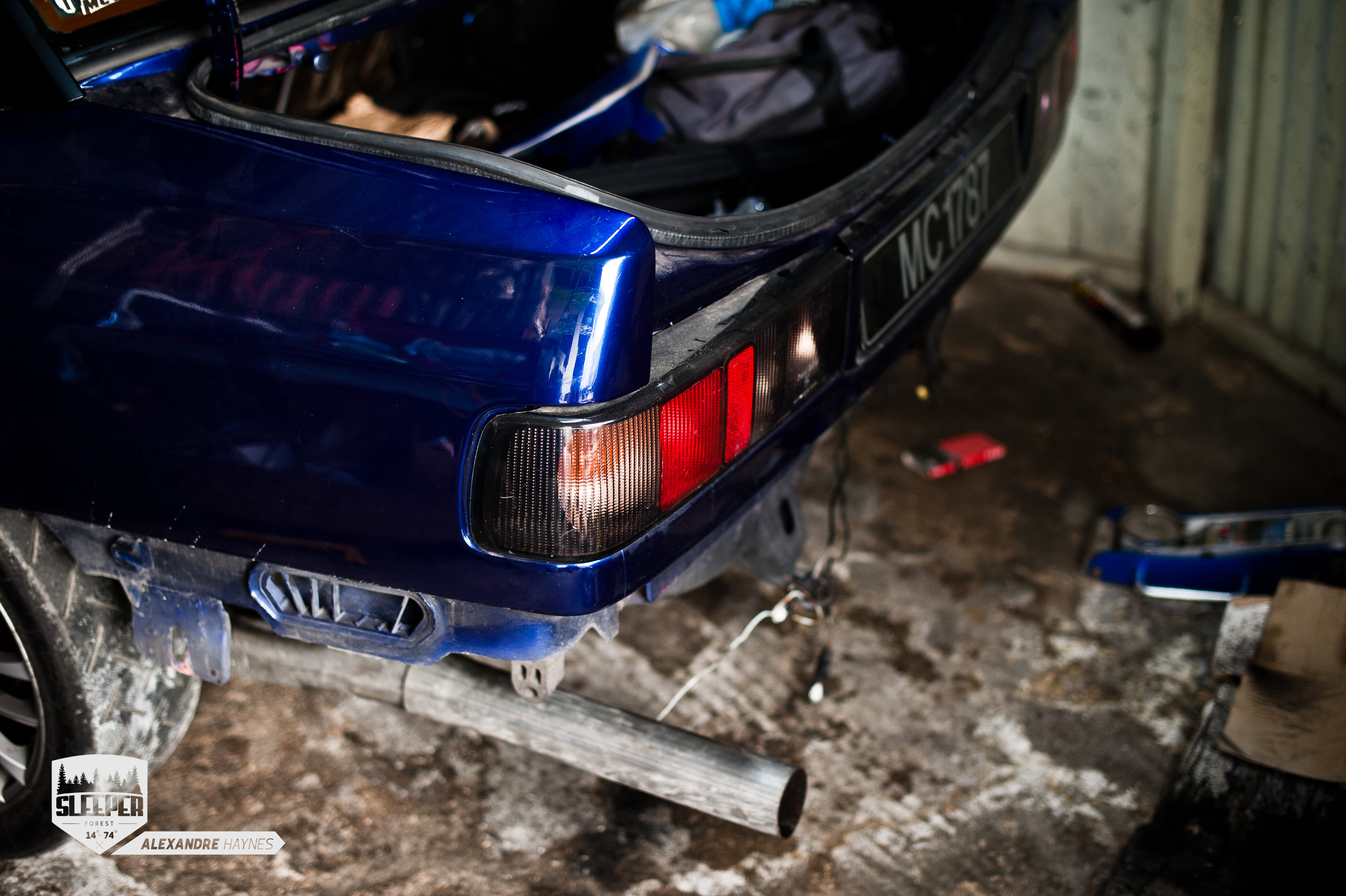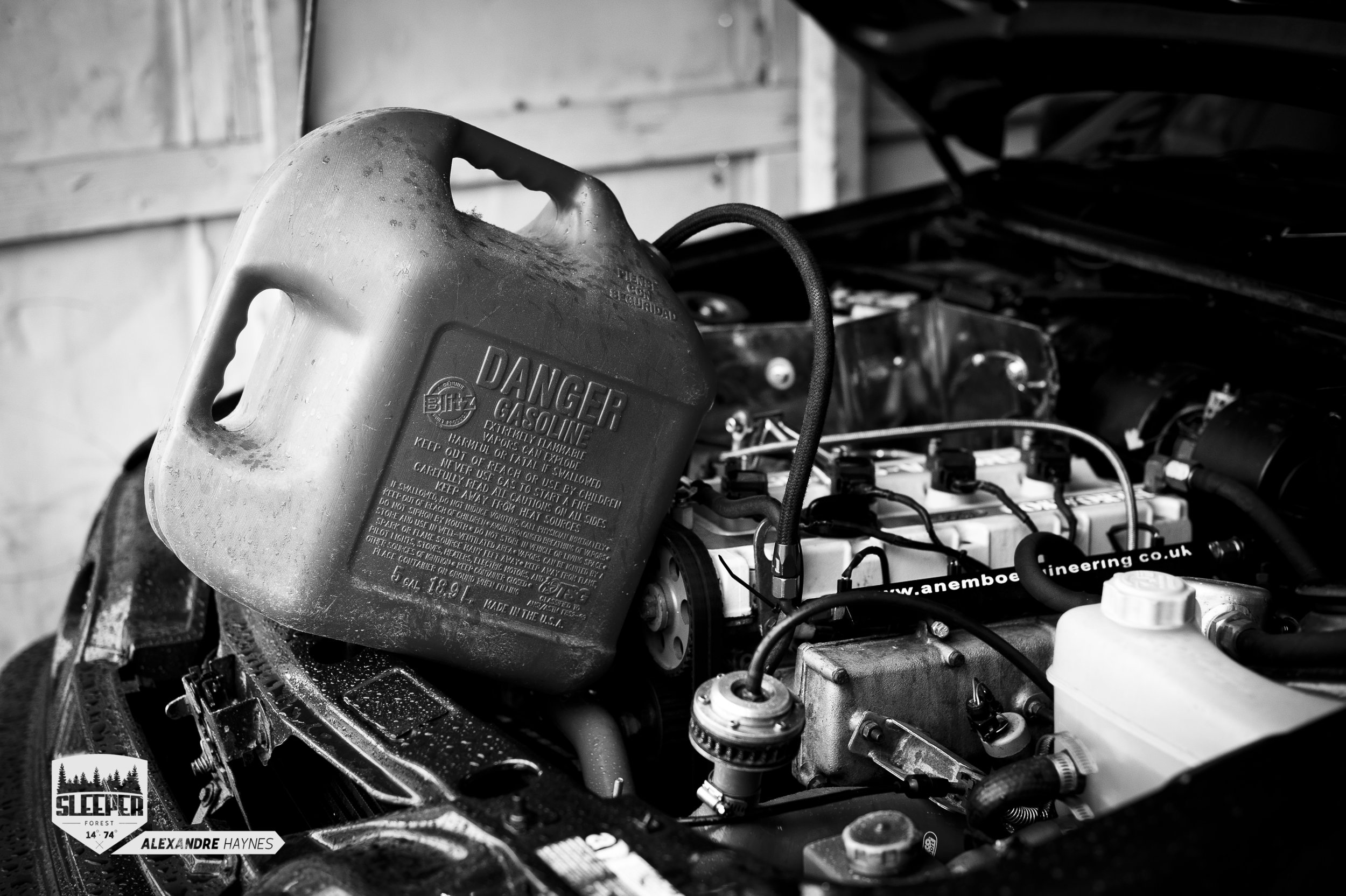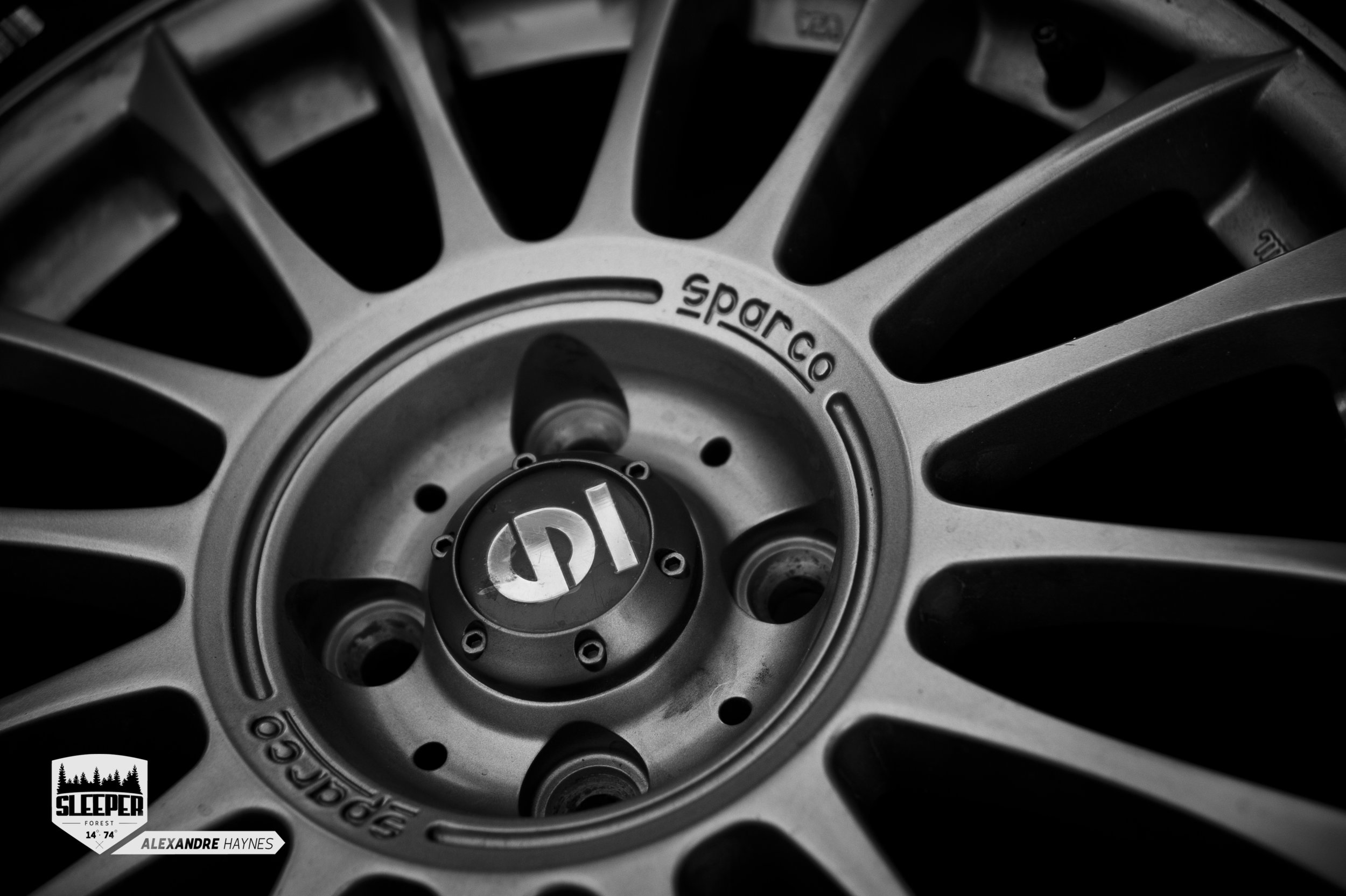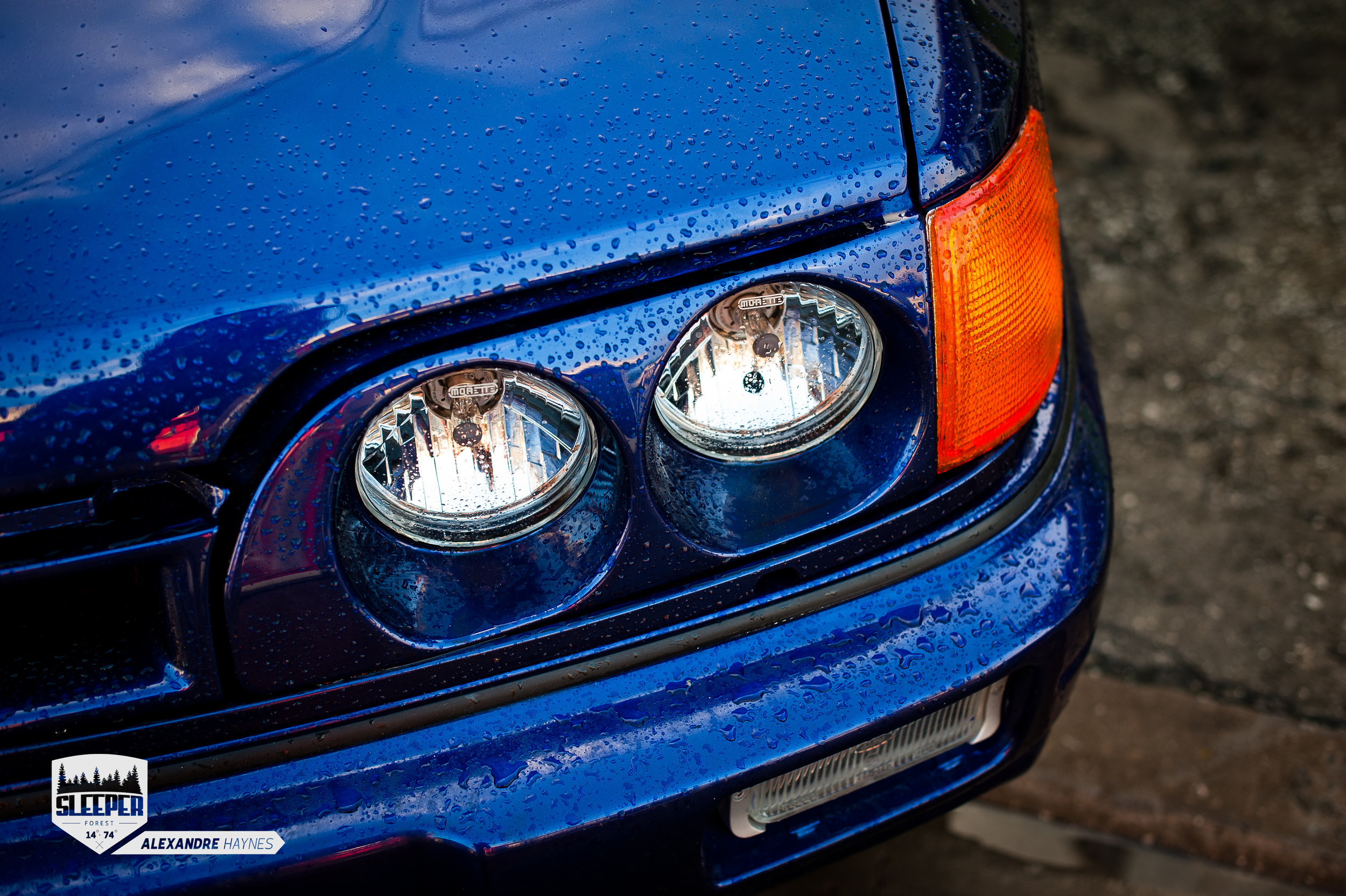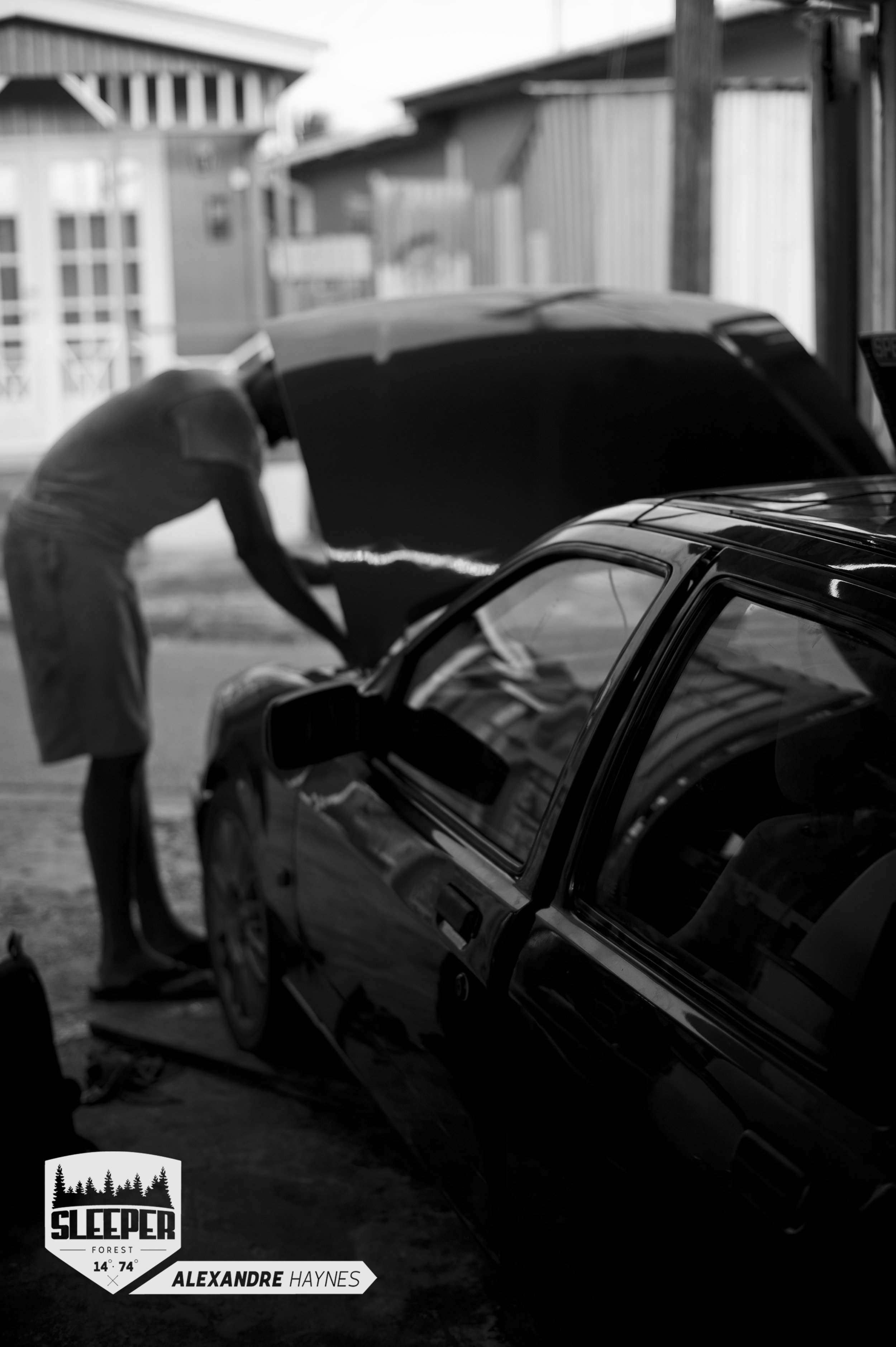Dio Mio, Is this "Gucci"?
On that day you have a really small meal that tastes amazing, for sure, and you wear your evening attire, and it’s an amazing occasion, photos are taken and you head back home, but let’s be honest, nothing beats the taste of a Gap Burger after you’ve had 5 beers and a few shots of rum. It’s greasy, it’s sloppy and it’s brash. All the photos are horrible and that’s the memory you keep with you forever. We all want that greasy gap burger for real. Burger Boys through and through.
If you wanted to run some Italian guy that’s really into Italian-designed cars up a wall, where would you start? He would definitely feel flattered knowing that you loved the exterior design of the car so much you’d copy it, but when he looks at it internally he’s gonna lose his mind if he knew it wasn’t all spaghetti and meatballs in there. It’s not fine dining, it’s not sophisticated, like a fine Armani suit, or a Louis Vuitton bag, it is not “Gucci”.
To be honest, that’s the issue I personally have with the discussion of “PuRiTy” where we hear over the internet that some cars should not be tampered with in particular ways, and this is why I am happy to have an engaging look at “Project Lamb”. Put simply my argument goes this way, we spend the majority of our time eating normal food, and a fine dining experience isn’t something that happens every day, it’s special, reserved for once in a blue moon, if not it runs the risk of losing its aura.
On that day you have a really small meal that tastes amazing, for sure, and you wear your evening attire, and it’s an amazing occasion, photos are taken and you head back home, but let’s be honest, nothing beats the taste of a Gap Burger after you’ve had 5 beers and a few shots of rum. It’s greasy, it’s sloppy and it’s brash. All the photos are horrible and that’s the memory you keep with you forever. We all want that greasy gap burger for real. Burger Boys through and through.
How Do We Make Our Gap Burger?
- THE PATTY
“We want displacement and raw power.”
The sophistication of fine Italian food is seen in the construction of the Lamborghinis flat plane V12. It has been central to the design of many Lamborghinis since the Miura. It’s slow-cooked, refined, seasoned, and done to perfection. Yeah, we don’t want that around these parts, we want displacement and raw power. Throw the meat on the grill in the form of a Chevy small block, 5.7 liters of raw power stroked out to 6.2 liters and making 481 units of pure, and unadulterated democracy to its crank. It’s almost the most basic of V8s, bulletproof and consistent. Part Availability is much higher if anything ever goes wrong with it, and aftermarket support is endless. These engines were used in Racing, family cars, minivans, trucks, and boats, the basic patty. In Project Lamb, its engine was replaced with a crate engine that was ready to go. Edelbrock provided the electronics along with it, to convert it from carburation to electronic fuel injection (EFI). This was made incredibly easy with the kit, it’s a plug-and-play kit replacing the inlet manifold with provision for port injection and fuel rails and delivery along with the Electronic Control Unit (ECU).
Once you’ve cooked your patty, you have to add the cheese, and that cheese is the EFI system, this overall system brings the engine into the 21st Century. The small block was mated to a gearbox from Renault. The UN1-16 gearbox can be found in cars like the Lotus Espirit. The shifter was a little dated though, and needed some ingenuity using some parts from the a Suzuki for the shifter assembly.
The cooling system was built around the new engine set up as well. A dual aluminum radiator set up was placed at each vent just behind the passenger doors, they were mounted up with brackets and fans attached to them. Racingline hoses replaced the old hoses and a new filler tank was added at the top of the system so it can be bled easily. These radiators are so far doing a good job keeping engine bay temps down coupled with their fans. Coolant temperature sensors would then be run to the Edelbrock ECU, where it can be managed.
With, air, spark, and fuel sorted with the engine it will run. All of this being managed with the new electronic management unit meant that the powertrain of the car would work and deliver its power to the gearbox. In our next “Project Lamb” update, we will take a look at what this Gap Burger patty would go in to make it the full package.
Aren’t you hungry?
Happy Motoring!
Follow Sleeper Forest on Social Media!
Sleeperforest_alex - that’s me!
This Corn fed Evo isn't lacking in Power
Highly boosted engines are not ideal when using pump gas. This is why, having a healthy diet is important to this build. This engine is making upwards of 38 psi of boost, and this is made possible by good old corn juice.
This month, I wanted to make an effort to find more project cars, I am dubbing it “Project Car Awareness”. I am looking for those that were being built for a while, and really deserve to be followed up to find out what’s been going on with them. I reached out to “EVOSOCIETY” here in Barbados and they put me on the trail of this interesting EVO 8. If you have an interesting project, send Sleeper Forest a message in our form down below! We look forward to hearing from you.
Being Vegan is the latest dietary trend these days. Recently here in Barbados, we have been hyper alerted to things that damage the environment as well. Being Eco-friendly is all the rage. So it goes without saying that you should put your project car on a diet, a vegan diet. This Corn fed EVO 8 isn’t lacking in power on it’s healthy diet of corn juice.
Kyle and Jabarry
I met up with Jabarry “Prince” (in blue), and Kyle (in red) to talk about Jabarry’s project. He’s been working on it for the better part of 2 years now, and it’s been a long process of building to get the car to where it’s at now. He’s part of a local racing team here called “PK RACING” and he’s been building the car to specialize in Drag Racing.
The Workshop
Jabarry has built a space to work on the car at home, and his machine finds its way home and on jack stands when it’s time to start working on it. When I came by he was doing some work on the factory inlet manifold, he was exchanging it for a PRO Series intake, housing a larger throttle body, and a more free flowing design.
The first thing I like to do is really take in a workshop, it’s such a great place to photograph contrasts of textures. Shiny chrome tools covered in oil, and what would’ve been clean toolboxes, covered in dust from use. It tells the story of a home project, taking time after work and a few hours on weekends to squeeze that time with your machine.
factory inlet
Friends are a large aspect of home projects, as well. Jabarry has been part of PK Racing for a long time, and other than it being a racing team, it’s really a group of friends who really love cars. They would have grown up together, and eventually wanted to make their own mark on Barbadian car culture. His friends know, when they see the light on, he’s working and they’ll pass by and see how he’s doing.
Kyle helps offer up the new manifold.
the 4g63
Why are EVOs so good? Obviously,because their engines have the correct orientation, that’s why. Fight me in the comments section. Mitsubishi has built one of the most legendary engines. This is a fact. Over the years, they have been working on different ways they could really deliver the most this platform has to offer to the surface it’s used on. On paper this engine sounds pretty mundane. It’s a 4 cylinder turbo, with a 2 Liter capacity.
What’s amazing about it, is that it gets the job done. Jabarry has rebuilt the motor in this EVO, exchanging many of the internal factory parts for forged aftermarket parts. EVOs really come alive when you throw copious amounts of boost at them. They just take it all and throws the power out at you.
Highly boosted engines are not ideal when using pump gas. This is why, having a healthy diet is important to this build. This engine is making upwards of 38 psi of boost, and this is made possible by good old corn juice.
Ethanol is an organic fuel. It can be obtained from cane, corn and other plants. What we know as race fuel, is derived from corn. Ethanol allows an engine to run far more advanced timing than gasoline. Its overall energy density being lower than gasoline means you will have to flow a lot more fuel into the engine, this means changing the fuel pump, injectors and the regulators.
Using ethanol though, really improves the performance of your engine, its cooler, has a much higher octane than gasoline and burns much cleaner. Downside to ethanol means, he will have to refill almost every pass on the drag strip, but it grows on trees right?
Looking Ahead
This project has been setting some crazy times on our 8th mile at Bushy Park Raceway, it’s well into the six second range. Building the engine is definitely important when it comes to a drag car, but some time can be shaved off using some better suspension, and coil overs are definitely planned for the near future with this car.
He’s been running the factory diffs, and driveshafts on the car, and according to some, they say he’s on borrowed time with this aspect of the car due the change in power the car is making, but he’s willing to run them until something happens, then he’ll know he's really surpassed what the car is capable of.
This car is an ongoing project. I’m excited to see what else happens with it. I really appreciate the welcome from PK Racing, and allowing me to take a look at this pretty unique build.
Until next time, Happy Motoring, and don’t forget to eat your greens.
Follow Sleeper Forest on Social Media!
This Toyota Starlet EP82 is going to be the death of me
Every project needs to start somewhere, and bodywork was definitely on the top of the list along with suspension (more on that in another update), especially when you have a couple mini rust craters on the roof.
A car manufactured the same year I was born, a car I had always loved and now a car I own, this Toyota Starlet EP82 is going to be the death of me. It's either going to work me to death or I'm going to get my head chopped off for all the money I’m going to throw at it over the years; one way or another, this love child is here to stay.
Every project needs to start somewhere, and bodywork was definitely on the top of the list along with suspension (more on that in another update), especially when you have a couple mini rust craters on the roof. I neglected it for a while but when an angel and a devil is on the same shoulder whispering in my ear, it was time to get it into bodywork and paint. the angel was there to save me from the pain of water leaking from the roof from progressive rusting and the devil telling me go full baller on the paint.
Well a little about me before we get deep into the article, most of the car scene would knows me as Vizionz ’93 Photography, but my name is Byron. I've been a car head for as long as I could remember and that love manifested into me falling into automotive photography. My plan for this build has probably been done time and time again but with every evolution of this 4 stage project, it's going to be a daily driver with autocross and time attack (hopefully it stirs at bushy park again) mode during the weekends!
So off to my cousin, Chillie Clarke, to get everything done in quick time. This isn't the first time I've seen him work but definitely the first time I've seen him working on a car; and trust the attention to detail is second to none. A cigarette in the mouth, sanding block and a bucket of water to wet sand the body with, he was already in his give when I got there on the day and nothing would stop him.
Touching the sanded primer/ filler spots around the car all I can feel is nothing but an extremely smooth surface, smoother than the previous paint on the car even; definitely took me for a loop! The rear right of the car that never lined up with the trunk is now aligned. The rust spots on the car that I always cringed at whenever they were in my sight, I can't remember which side had which spot, and did I say already it was buttery smooth. The only thing reminder of the car I know I first bought is the door handle I broke on the right passenger door.
It was time for another layer of primer; a cigarette and a steady hand is all it takes as the scent of the primer permeates the garage. Walking around the car one last time, I pay attention to all the spots I know that would’ve never been noticed till he did his work.
A spot of guide coat would bring an end to the day, just to pick up the sanding block and another cigarette again the next day. Till the next update, I'm just going to let you know now, it's going to be a bit sexier…
Gallery
The Redline Performance Z
He has a vision of what the Z should really be - a childhood dream come true. This project is the physical manifestation of that vision.
The next logical choice? The heart of Gojira
AN ORIGIN
In the 1960s, Nissan prepared to step out of its comfort zone and market by pairing with Yamaha to create the next hot sports car; the partnership provided a rather disappointing engine from Yamaha in the form of the DOHC 2.0L engine which ultimately proved not to be in keeping with Nissan's standards. The joint project was scrapped and the engine in question was eventually made into prototype and taken to another Japanese car maker - Toyota. Thus, the 2000GT was born.
With the entry of the 2000GT, Mr. Yutaka Katayama, President of Nissan USA, still saw the need for a sports car in the international market at an affordable price. Nissan's Chief of Design at that time, Mr. Yoshihiko Matsuo, was one of 10 individuals tasked with creating such a machine. Matsuo's vision was a race car in every aspect, however there were lines to be drawn in keeping with the president's US market requirements.
The collaboration created the very first Z platform car - the Nissan 240Z as it would be called in the US Domestic Market. The Japanese variant carried the now iconic Fairlady badge - so named by the president of Nissan Motors Japan, Mr Katsuji Kawamata, after his favourite musical. The Z would become Nissan's definition of cool.
A VISION
Enter Chris, owner of Redline Performance Imports, and his rendition of Nissan's 280Z.
“Never. I’ve never driven one, never been in one. I’ve seen one or two driving past me overseas... that’s it.”
Chris has never actually driven a Z, and this makes his choice of project car somewhat peculiar. Despite not having a feel for the car, its performance and limitations as a factory production machine, he has a vision of what the Z should really be - a childhood dream come true. This project is the physical manifestation of that vision.
Building a car is an arduous task, as anyone who has undertaken a project car can attest when they had to change things up for the car to make it to the road or track. Building an ideal, however, is different. Such dedication is pure and unwavering, so instead of taking shortcuts or seeking alternatives, Chris has been steadfastly at work on this car for about 7 years now. There’s a lot of disagreement among fans about which chassis was the best; some argue the 240 was better because it was lighter, and of course it was the first Z. Being the first, there’s a pedestal on which the 240 chassis has been placed - it was flexible, which made it more nimble but alas it was unable to take high horsepower applications. Fast forward to the 280Z, the disadvantages of which were its front and rear bumpers, designed with modern pedestrian safety in mind, ultimately making them ugly. Fortunately, the bumpers can be removed for a facelifted 240Z transformation. The advantages of the 280Z come from its overall stronger chassis which made it extremely desirable in this restomod application.
The chassis was bought in the US, so it started life as a left hand drive but when it arrived in the island from California it was converted to right hand drive and work on restoring the chassis itself began. It was sandblasted, seam welded, epoxy coated, primed and painted - the new seam welds further increasing its overall rigidity and strength. Chris addressed the dated look of the stock Z with a custom upgrade to the front and rear bumpers, which flowed into custom molded extra-wide flares, increasing the aggressiveness and presence of the car. Once the bodywork was completed it was time to work on the engine.
POP THE HOOD
Inner demons
Pop the hood and the pearlescent engine cover really stands out but then the countless man hours poured into this engine bay are evident.
From the factory, Nissan's 280Z came with the largest displacement engine of all Z models at the time - Nissan's 2.8L L-series engine. This line of engines, while awesome in their own right, would not be destined for use in this restoration. The next logical choice? The heart of Gojira - the iconic RB26DETT. Best known for its applications in the Nissan Skyline from the late 80s to the end of the 90s, the RB-series is a direct descendant of the L-series and its spiritual successor. Should the 280Z have been built in the 90s instead of 80s, Nissan would have undoubtedly put this engine as its power plant. Chris' RB26 was imported directly from Japan, and needed some work upon arrival but looking at it now you'll find all the bells and whistles need to make it capable of reaching north of 600 HP.
There is no compromise in quality or customisation in this engine bay.
These custom wheels will corner off the Z
Ceramic coated copper center caps
Those 600 odd horses will be transferred to the tarmac via these custom wheels from Password JDM: 3-piece forged with frosted gunmetal inserts, topped off with a ceramic coated copper stepped lip and center caps. Chris will run a 17x9 up front and 17x11.5 to the rear mounted on spacers to fill the extra-wide flares.
This two caliper set up on the rear is something special: one caliper connects to the upgraded braking system and the other to the fully independent hydraulic handbrake.
The list of modifications, albeit incomplete at the time of publication, is extensive in the best way possible. Here's what it looks like:
- OS Giken 1.5 way LSD
- Techno Toy front + rear lower adjustable control arms
- Techno Toy front tension rods
- Motorsport Auto upgrades roll bar
- Energy Suspension polyurethane bushings
- Ground Control custom springs
- Beta Motorsports coil sleeve kit
- Tokico Illumina adjustable shocks in sectioned struts
- MOMO Protipo steering wheel & hub
- MOMO N55 seats
- Arizona Z Car mustache bar & dog legs
- Arizona Z Car rear brake kit
- Arizona Z Car billet 'bump steer' adjusters
- Custom rear brake bracket
- Wilwood Dynalite handbrake calipers
- Wilwood front big brake kit
- Wilwood compact handbrake cylinder
- Wilwood brake proportioning valve
- Beta Motorsports carbon fiber bonnet - customized vents
- Beta Motorsports fiberglass back hatch
- Tomei camshafts
- Tomei head gasket
- Tomei oil pump + head restrictors
- N1 water pump
- HKS burnt Titanium muffler tips
- AEM V2 plug & play management
- AEM Wideband air/fuel gauge
- Aquamist water injection kit
- GReddy timing belt
- GReddy intake manifold
- GReddy thermostat oil cooler adapter
- GReddy style upgraded intercooler piping
- Magnaflow 3" to twin 2.5" muffler
- Vibrant 3" twin race resonators
- ARP bolts - head / conrods / flywheel / exhaust studs / wheel studs
- Aeromotive fuel pressure regulator
- Aeromotive canister fuel filters
- ATL wheel well fuel cell and floater
- Kumho Ecsta intermediate tyres
- Cosworth engine bearings
- Raw Brokerage aluminum pulley kit
- Raw Brokerage complete engine bolt kit
- Tilton compact clutch master cylinder
- NISMO upgraded clutch slave cylinder
- Nitto clear cam cover
- Autopower roll bar
- NRG fender washers
- Tilton clutch cylinder
- CP pistons - 9.0 compression
- Manley conrods
- Manley valves
- Manley valve springs + keepers
- Supertech valve guides + seats
- DEI Reflect-A-GOLD firewall sheeting and tunnel cover
- Aerocatch locking hatch pins
- Mishimoto 2-core aluminum radiator
- Mishimoto radiator electric fan + shroud
- Earls Performance oil cooler kit + lines
- Fluidampr crank harmonic balancer
- Garrett GT2860R twin turbochargers
- OBX exhaust manifolds and downpipes
- Holley Performance PTFE brake + fuel hose and fittings
- Silicone coolant and vacuum hoses
- DeatschWerks 800cc injectors
- Speedhut custom gauges
- Walbro twin 255lph fuel pumps
- McKinney conversion engine mounts
- McKinney custom drive shafts
- Upgraded 300ZXT CV half-shafts
- Motorsport Auto stub axles
- SPEC lightened flywheel
- SPEC Stage 3+ clutch + pressure plate
- Upgraded 300ZXT brake booster + master cylinder
- Rockford Fosgate speakers
- Muteki neochrome lightweight wheel nuts
- Wiring Specialties custom engine harness
- Custom 'Z' rad / intercooler bracket
- Custom engine oil sump
- Custom & flocked dash and console
- Custom extra wide molded flares contoured to front + rear bumpers
- Shaved indicators / antennae / fuel door
- Carbon fiber windshield cowl
- Custom fenders / turn signals
- Custom side skirts
- Custom rear end and bumpers
- Custom rear twin out stainless exhaust
- Motorsport Auto rear spoiler
- Motorsport Auto fiberglass front bumper
- Motorsport Auto modified fiberglass air dam
- Louvered inspection lids
OUTLOOK
With almost a decade under the belt on the build, the Z is nearing completion - word from Chris is that the vehicle will finally hit the streets in the coming weeks. Though it has never been driven on the road locally, it is by no means a secret to the public. Z fans wait with baited breath until the street arrival of such an iconic Z, and Chris is sure to acquire the correct parts to lay down some serious rubber.
Until then, enjoy these images from our interview.
Man and machine
ADDITIONAL IMAGERY
Check out Chris' store:
Website: Redline Performance Imports
Email: info@redlinebarbados.com
Instagram: @redlineimports
Facebook: @redlinebarbados
Mk 4 Escort Update
With most of the interior out though, Alvin and I were really able to see where all the rust was at in the chassis. Outside of the rust in the expected places, he spent some time fixing some badly done work made by the previous owner. The car has been through a lot through its time here and it's actually quite refreshing to see it being stripped down and refreshed.
Well, its a lot rustier than I thought it would be, but it can still be saved.
Since the last time I posted about The Escort, if you have been following us on Instagram, I've been live streaming the progress of the car. If you haven't seen it, that's okay, you can read it here. The car has been stripped, that took about a day, to get everything out safely. The car is 31 years old, many of the interior's parts have rotted or become excessively brittle, we really need to pay due attention to things.
Trash car will soon have it's time to shine.
With most of the interior out though, Alvin and I were really able to see where all the rust was at in the chassis. Outside of the rust in the expected places, he spent some time fixing some badly done work made by the previous owner. The car has been through a lot through its time here and it's actually quite refreshing to see it being stripped down and refreshed.
The project as it stands now.
“Yeah we can still save it, don’t worry.”
The windscreen and sunroof were removed as well, and I finally got some good news, the sunroof rack was not rusty, at least that bit was fine. The rest of the car though, I'd have to leave in his competent hands.
Let's start talking modifications though obviously, this is a bit more than just a full restoration of the machine, it's a build. Being that it's a build, the best time to delete, or reinforce usually is at the stage of bodywork. I have a few things in mind for the car, that gives me personal satisfaction, and a few things the car will need to prepare it for the new heart it will be receiving the coming weeks.
First of all, I am killing those rear triangle things Ford confidently adds to their 4 door models, I hate those things, toss them please, never let them see the light of day. With the rear side window delete and replaced with some sheet metal, it should help give the car a more modern feeling.
I'll be adding some structural mods that are functional as well, The rear shock towers will have a strut bar, and one will be added to the front of the car as well, in order to beef up the feel of the car. The rear strut bar will be a homemade job, so we will be doing some planning in order to make it work.
The interior of the car is clearly in arrears. I'll be doing some cosmetic changes to the door panels. The old door panels have really seen its share of life, so I will be replacing them with some aluminum cuts. I am not sure if this will save weight, but it would definitely look a lot cleaner when it's finished, it should have a nice carpet finish on it.
The final piece of the puzzle would be finding a new windscreen. The old one started to split with age, and it became opaque around the edges. I am starting to believe that finding a donor car would be correct action to take, but I will see what we can work with first. Surprisingly enough, seeing the entire car broken down is giving me a lot of motivation to get it up again.
Stay alert for more updates on the build as it continues. Until next time, happy motoring!
-Alex
The Phoenix
The lancer shell is pretty rusty but the EVO 3 shell though not perfect is in good shape. Every weekend he's been transferring parts he can use from the Lancer to the EVO, control arms, brake and fuel lines, drive shaft etc.
The 90's were an amazing time in the Japanese automotive industry, it is often referred to as JDM's golden era and with good reason.
In the 90's, it can be argued that cars such as the Honda NSX, the Toyota Supra, the Subaru Impreza WRX STI, the Mitsubishi Galant VR4, the civic and Integra Type-R, the Mazda RX-7, the Nissan Skyline GTR and of course the Mitsubishi Evolution were in their stride. These offered a more hands-on approach to driving than their later iterations.
I got to spend some time with a friend of mine. He owns a project car. He's restoring a Mitsubishi Evolution 3. His name is Mark and although this isn't his first project car it's certainly one of the most interesting. Mark has been around cars a long time he learned all he knew about working on cars from his father and other "old heads" he hung around, after that it was easy to apply what he learned.
Humble Beginnings
His first project was a 1991 Toyota Starlet Soleil it was automatic and had a 4efe engine. He converted it into a GT Turbo Starlet. He replaced all the body panels, interior trims, and lights with those of the GT Turbo model. The build was pretty extensive. Later he got an LSD manual gearbox, converted the car to manual, turbocharged the stock 4efe engine and ran it at 7psi of boost. From there Mark had to make a decision on what his next step was going to be with the car. Originally he was going to swap the engine with a fully built 5efe engine and add some boost but he then decided to do something different and take a 4agze from an ae101 Toyota Levin. This engine was supercharged and that was causing some problems while mounting the engine so the decision was made to turbocharge it with a td05 turbine.Supporting moods were then made so it could actually handle this power. For suspension, he used Buddy club coil overs, for brakes at the front bigger hubs were fitted then 10" slotted StopTech rotors, attached to those were 4 pot Wilwood calipers and at the rear stock GT Turbo calipers were used. I'm sure I missed some stuff but as you can see it was an ambitious build.His next project would be a bit more challenging. Due to his love for 90s cars he ended up restoring a Mitsubishi Evolution 3, one of the few in the island. The build hasn't been going on for very long but it's shaping up nicely.
The Phoenix
Mark has given the car the name The Phoenix and in order to raise it from the ashes, he has been using two rolling shells, a 1996 lancer GLX shell, and the EVO 3 shell. The lancer shell is pretty rusty but the EVO 3 shell though not perfect is in good shape. Every weekend he's been transferring parts he can use from the Lancer to the EVO, control arms, brake and fuel lines, drive shaft etc. When I got there he was in the process of removing the fuel tank and drive shaft.
Life as a donor car is hard.
Mark does the majority of the work on his project on his own, he's the type that believes if something needs to be done it's best to do it yourself, although, when he runs into trouble he'll be the first to admit he needs help or that he doesn't know what he's doing. It's all a learning experience after all and project cars tend to teach us a lot.
The goal for the car right now is to get it running but Mark does have big plans for it in the future. He wants to do a full build on the engine, fully forge it, bigger turbo etc. The end goal though is to get the car into the 6-second bracket on the 1/8 mile drag strip (we don't have a 1/4 mile strip here). This goal is very obtainable the stock 4G63T makes about 270bhp stock in a chassis weighing 1260 kgs or so, the same weight as my Subaru GC8 WRX, it'll be mighty quick.
This build really resonates with me as we both own 90s cars, rival cars of the same golden era. Also, the first cars we put a lot of work into were both Toyota Starlets. Watching this build I'm living vicariously through Mark and I hope he meets his goal of finishing the car this year.
Oringal Momo wheel
A good days work.
Building a car is all about passion, project cars test you in every way imaginable and they may not be for everyone but if you have the drive, there isn't a more rewarding experience.
We will be keeping you up to date with this build, until next time.
-Maurice
It's rusty, it's old and it's mine!
The Mk 4 Escort was a little more thrown to the side, because of its front wheel drive nature. People believe it’s lost its charm because of this, but I’d disagree.
It's rusty, it’s old and it's mine! It's not every day we find our dream cars, but when we do, it's well worth the effort to polish the diamond and see what it's truly worth the effort. As car enthusiasts, we can all relate to the idea of not having one specific dream car. Usually, it's a case of having ideal cars in ideal situations or being like Jay Leno and owning them all. The worth of a car can be deeply rooted in its culture.
Who did it influence? Why was it important to car culture? These questions usually cannot be answered immediately, it takes time for the answers to be answered. Fortunately for me, this car is around 31 years old, so I'm sure any questions it has to answer, it has answered them, dropped the mic and walked out the room already.
What car did I find? I found a Ford Escort Mk4 Ghia. If you are an avid reader of this blog, you would've noticed my tendency to hold a special place for Euro Cars, especially old ones. I actually really like regular cars. This car is about as average as they get, the car originally came with a 1.6 carbureted engine, probably didn't even make 100 hp, it was a mass mover.
Taking families to vacations, taking parents to their jobs and dropping children off at school. Why then do we then, associate Escorts with hype, and speed, and racing?
“This the front wheel drive one? Right? I remember they were cool, then they went front wheel drive.”
This is where the Escort becomes special, due to the quantity of them, they were likely canidates for modification. Suddenly they were blasting through rally stages, nosing around circuits and burning up the streets at night Escorts were the car to have here in Barbados back in its heyday. In fact, most sleeper platforms were Escorts. It was quite common for an Escort to be sporting a larger engine either from a Sierra or Granada.
I’ll be honest, when I started hunting for a project car, I really did not expect this car to cross my path. I remember growing up, I saw a few of them on the road, zipping around. They always caught my eye but when I was older they were no longer around. I did always want to own one, but I thought it would have been highly unlikely.
I found this car, being parted out at a yard, and I was fortunate as well, as it just arrived there and not much interest was shown in it. Perhaps the lack of Escorts on the island also accounted for this, but it was really nice to find a running car for really cheap.
Is this Car my dream car? It may be one them. Many persons have fallen in love with the Mk 1 or Mk 2 Escorts. When persons speak about Escorts, they refer to those 2 models specifically. The Mk 4 Escort was a little more thrown to the side, because of its front wheel drive nature. People believe it’s lost its charm because of this but I’d disagree.
This new project car is actually the perfect platform to build a really fun sleeper. With the introduction of the Mk 3 and Mk 4 Escort came the RS Turbo, although the car it was front wheel drive, its 1.6 CVH engine, spat out a decent 133 hp with the T3 Garrett slapped on it. These engines were capable of a lot more though, and have been modified to produce around 600 + hp in recent times, that's a lot for a 4 cylinder 8 valve engine!
I won’t be making crazy numbers like that though, but it should be pretty quick off the line. I’ll be going more in depth in the near future with this car, keeping you guys aware of the ongoing project. I’ve got plenty of work to do getting it ready to drive, but I’m looking forward to stepping into this “project car” life.
Stay tuned for further updates! Until next time, this Alex, Happy Motoring!
For the love of HONDA
Recently we had the pleasure of meeting Duane Skeete. He and his father are building a hatchback EG Honda Civic. This Honda is Duane's third or fourth Honda I believe, so he knows his way around the platform. The car isn't done yet but we can already tell, It's going to be clean...and quick.
Hondas are great cars.
However, as we all know they sometimes receive a lot of hate in the car community. Honda owners are stereotyped to be young kids who rice their cars and install tasteless exhaust mods (huge fart cannons on the exhaust)
When in the hands of the right person however, great things can happen.
Recently we had the pleasure of meeting Duane Skeete. He and his father are building a Hatchback EG Honda Civic. This Honda is Duane's ninth Honda I believe, so he knows his way around the platform. The car isn't done yet but we can already tell, it's going to be clean...and quick.
Duane and his father have been building this car for the past 3 years or so, you would never know they aren't even mechanics.
Pops
Their attention to detail on this build is amazing, everything is immaculate, this is mostly because of Duane's father, he believes in keeping his work shop tidy and cleaning and maintaining his tools well.
“A tidy man = A tidy car.”
The shell is currently empty for the most part but the engine is mounted. A Honda B18c motor rests under the hood. Pulled straight from a Type-R these naturally aspirated motors make close to 200bhp, in this tiny, light, 2door hatch the power to weight ratios are going to be a bit crazy.
B series
This car is Duane"s first engine swap, but you'd swear he's a veteran. He gets the majority of his information online. That's the beauty of hondas, there's so much information available about them and aftermarket part support as well. It's a good platform to start on if you want to modify or build a car. Unlike my subaru, the engine bay is a nightmare if you don't know what you're looking for.
Over the years Duane has amassed quite the number of parts for the car.
Brace for the incoming parts list.
- ASR sway bar kit for the rear which includes a chassis reinforcement plate, sway bar and rose joint end links
- Top fuel carbon intake
- Momo race steering wheel
- K Sport coilover
- K Sport lower control arms - Voodoo line
- Skunk 2 front and rear camber adjustable arms
- Blox Mini Race muffler and 2.5" mandrel bent pipe
- NRG weighted shifter
- B&M short shifter
- Hasport engine mounts
- Energy suspension complete bushing kit
- New genuine Honda Si front lips and fog lights and varies clips, bolts, etc
- Fully rebuilt GSR front and rear brakes
- Hondaata s300 ECU
- All the bolts in the engine bay were replaced as well because they were all rusted
Duane admitted the list is long. Almost everything has been replaced, even all the door and trunk strips, windshield rubbers, seals around the tail lights and new tail lights. He has a lot more planned for the car, like a full aftermarket exhaust but such is the nature of project cars.
When we first got there to photograph the car Duane and his father were already working on it, they try to every weekend. The plan for today was to install the shifter, bleed the brakes and do some work on the engine loom.
We were impressed when we saw them fidgeting with the loom but we were assured there are wiring diagrams online and it only looks hard. Beautiful how cars can bring people together.
Duane said the car should be running in a month or so. We have high hopes for this build and we'll up date you guys as it goes along.
Till next time.
-Maurice
A Path to Maturity
Our hobbies turn us into artists when we really think about it. We think less of the monetary value of what we are doing, and make concessions for it because of the sheer love we place in it.
We all end up with a hobby, sometimes they come naturally with the skills we have in life, or what our passions are. It's something that helps us get away from the day to day hassle or the stress of our day to day jobs. Our hobbies turn us into artists when we really think about it. We think less of the monetary value of what we are doing, and make concessions for it because of the sheer love we place in it.
If you love cars enough, maybe you toy with the idea of owning a car you could enjoy on the weekends. Undertaking a project is a deceptively long process. Project cars are what separate a car lover from an auto enthusiast. It requires a level of commitment that some persons are either not willing to take on, or develop through finishing if they make it to the end.
It was amazing to meet Jan-Yves in his element. He's a project car veteran. Things didn't really start out that way though, the origin story (if you want to call it that) of his car was really interesting. He bought this car on his birthday, as a present to himself and really loved it. His goal at the time was to make it his daily but things had a turn for the worse, when it was involved in an accident. It was during the repair process, that the thought of upgrading the car came to mind. Eight years later, it's no longer the same car he started out with but this is his project.
“This car has its own laptop, and tablet. They never leave it.”
Jan-Yves is building a Ford Sapphire Cosworth. Usually, when we hear Ford coupled with the word "Cosworth" we sit up and pay attention. Here in Barbados, owning a Ford is a rarity, owning a Ford from the early 90's that isn't a rust bucket, that's even rarer and let's not even talk about owning a Cosworth.
In the pursuit of perfection, he has rebuilt his car from the ground up. In fact, this isn't even the same chassis with which he started. He was able to acquire another chassis and swapped the internals after doing some bodywork on it.
The 2L 16v Cosworth Turbo engine also got some love, after being fully overhauled and cleaned up. The wiring is all new, need feed hoses and cables. The engine carries the Ford Escort MK5's big turbo, that makes about 15 psi, which helps the engine get up to 300 bhp quite easily. A stage 3 Clutch and a Fidanza Flywheel were added.
The engine is now managed by an ECU MASTER EMU and the instruments in the dashboard were changed to a Stack tachometer. The Stack fuel level gauge and the other gauges are managed through the car's Asus tablet
He's added Honda k20 coils , a Cosworth kevlar timing belt to the engine, an Anembo Engineering fuel rail, a Grahame Goode breather system, as well as an Airtek rs500 inter-cooler and radiator. Internally it's still the same Cosworth engine, coming from the factory.
Being a work in progress meant the interior was pretty messy, with wires and diagnostic cables everywhere. The top of the dashboard was cleared to add space for the tablet that now connects to the car and monitors everything that's going on while the car is on. It's nice to see this merger of old and new.
He's pretty excited about his custom shifter knob.
The exhaust has not been changed, it's standard 3-inch exhaust. However, the sound, from the brief time of hearing the engine running, does not let you down one bit. At the moment, he has a fuel pump issue preventing the car from really working it's best. The fuel system uses a Bosch 044 fuel pump, Protec Fuel Systems 340 surge pot and Fuelab Fuel Filters.
The suspension was built using Gal Gold Coilovers and Powerflex Black Bushes, making sure bushes would not have to be changed for quite a while. Pro grade bushes are always a little pain to go in but in the end are always worth it for the time saved in maintenance. That's building with a view to the future.
Brakes were also upgraded, increasing the car's stopping potential with some Ksport 8 pots. Tying everything together cosmetically were some Sparco Pista wheels and some pretty rare Morette quad light conversions for the Sapphire.
Jan-Yves is an Auto Enthusiast, and he really has placed a lot of value and emphasis on the "just right" feeling, of knowing every aspect of his car has come together exactly how he envisioned it. He mentioned sometimes he does a once over the entire car and engine bay to make sure all the bolts are tightened just in case.
“It has given me a sense of maturity over the years, developing patience, and self-control. This car has personally changed me over time.”
I'm definitely looking forward to the end of his Project Car, look out for the next article, until then, happy motoring!
- Alex
Take a look at the progression of the entire project HERE.
































